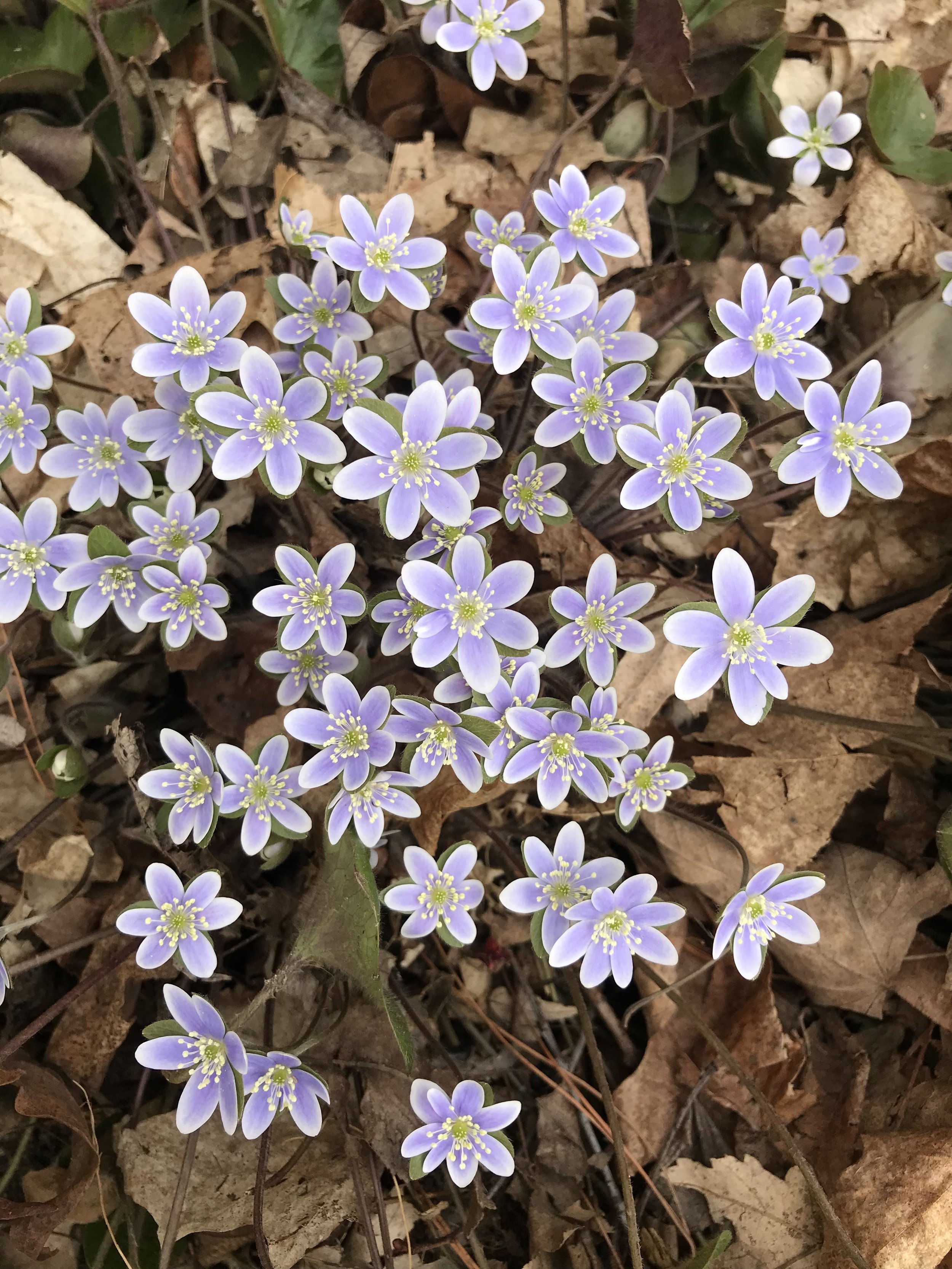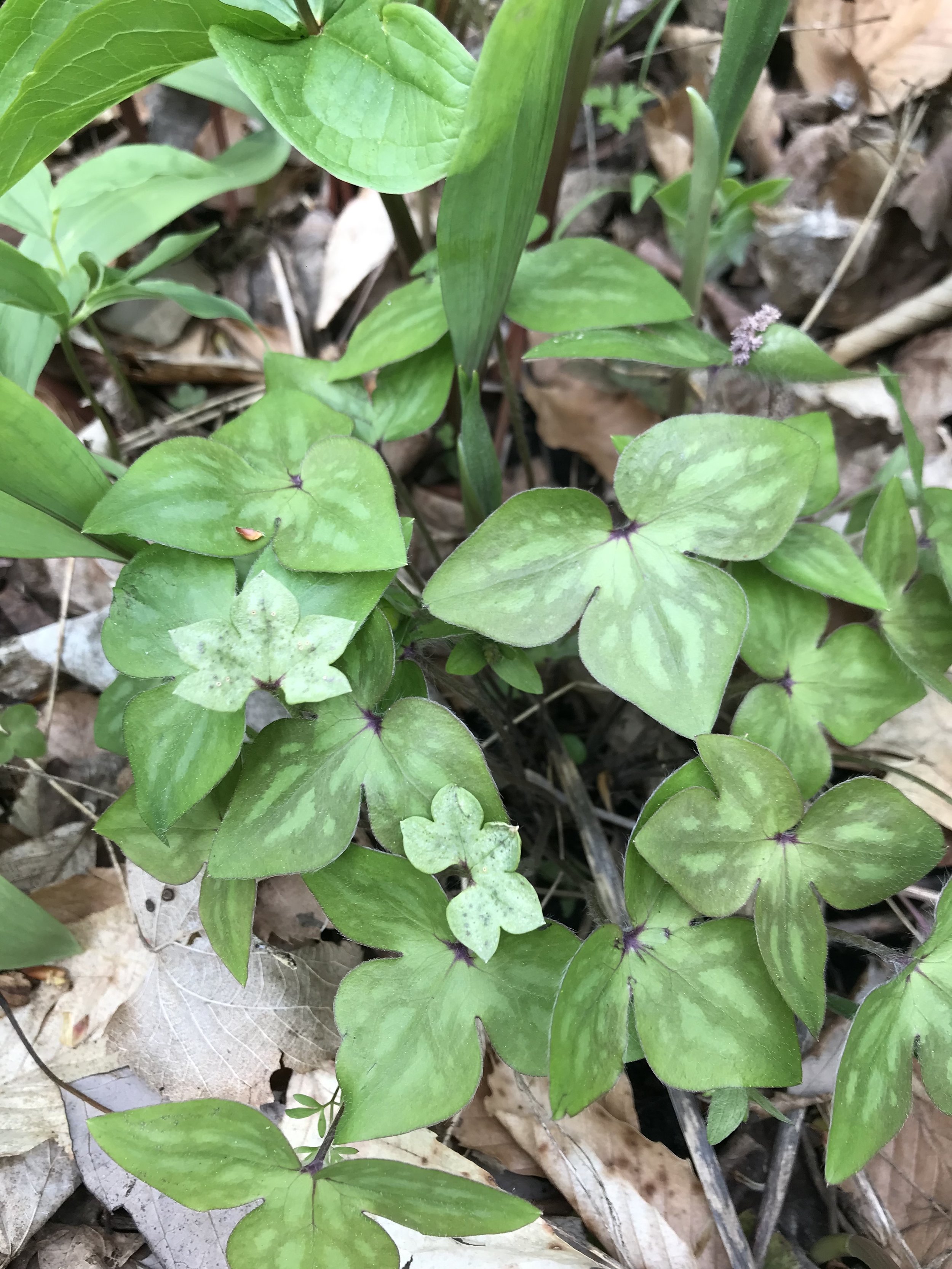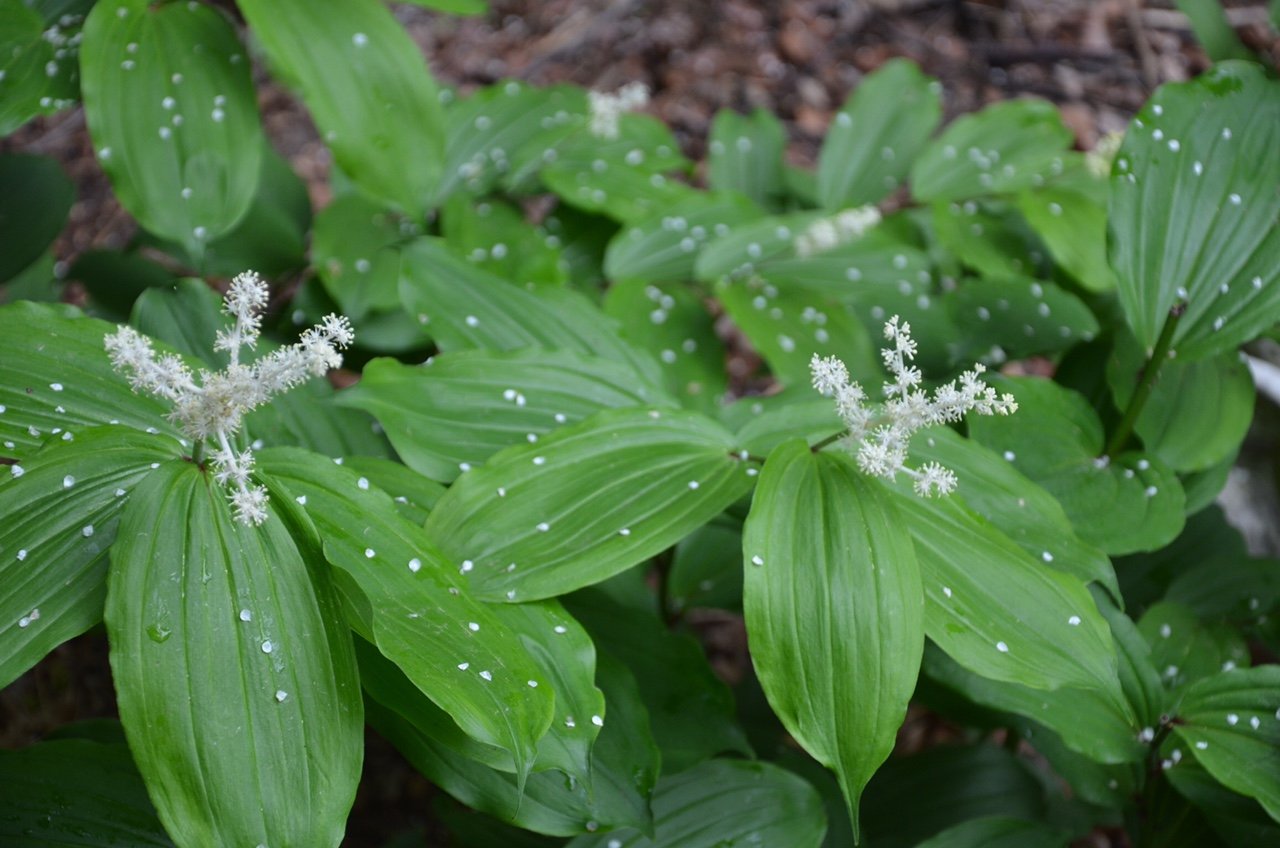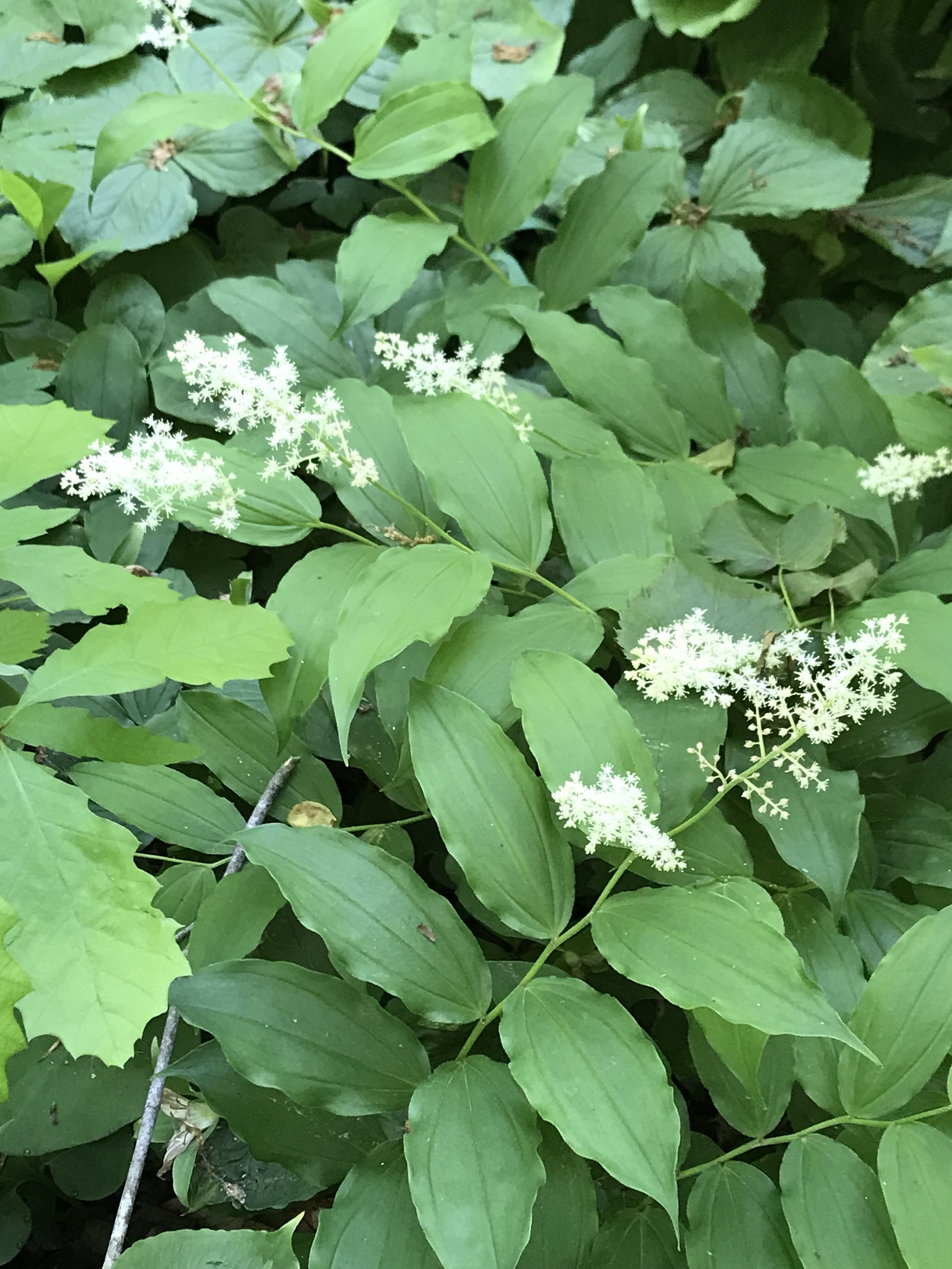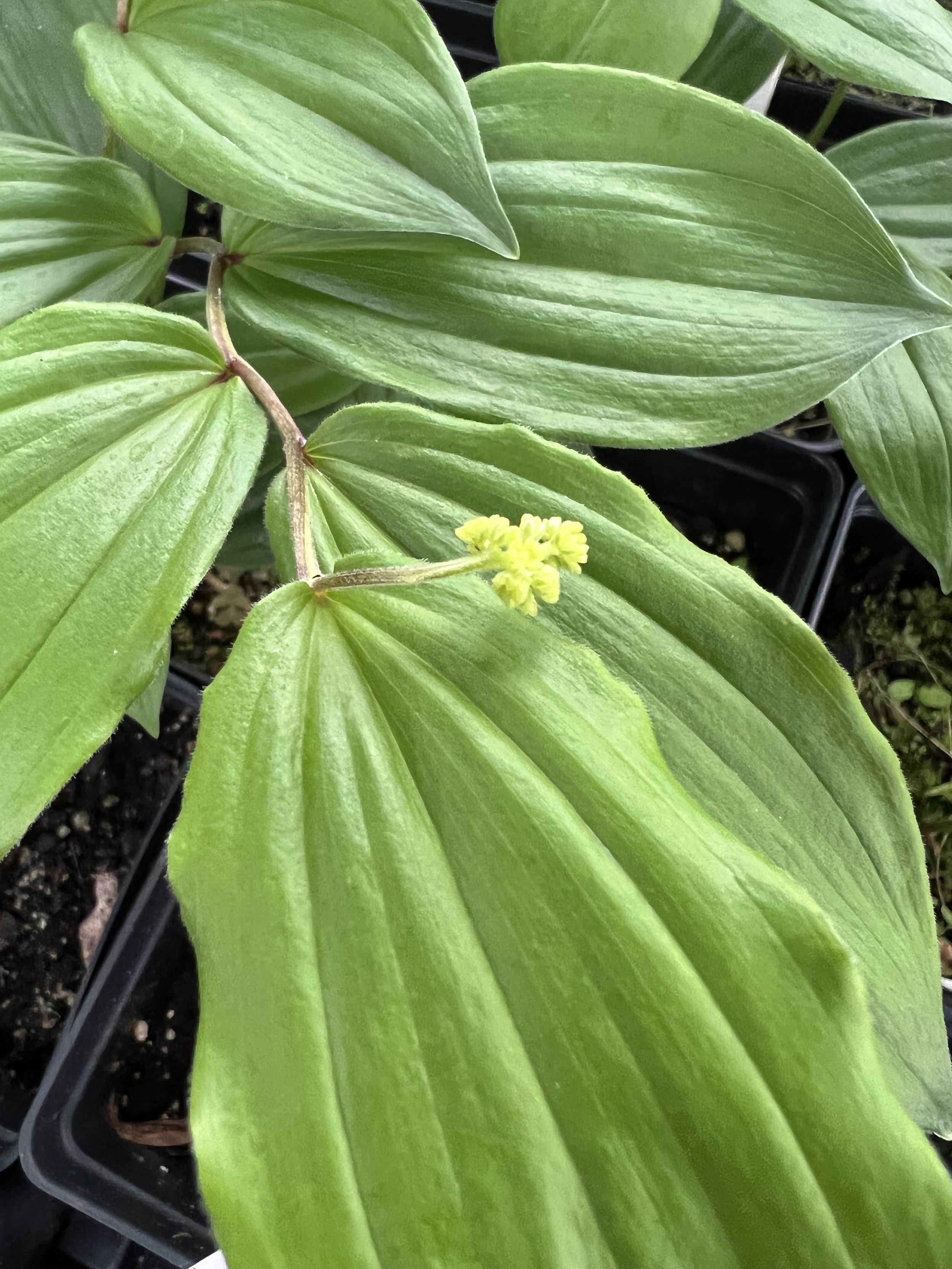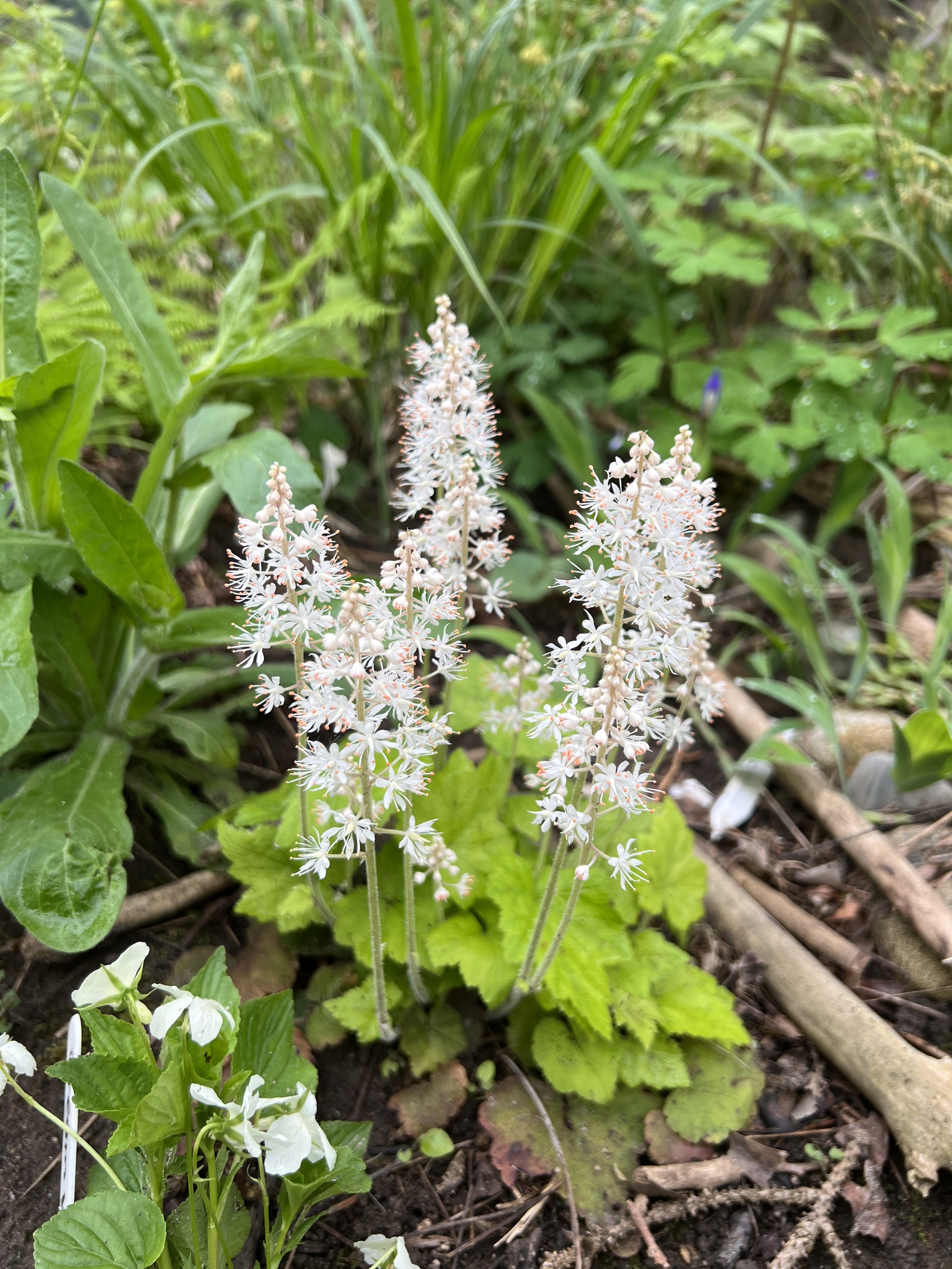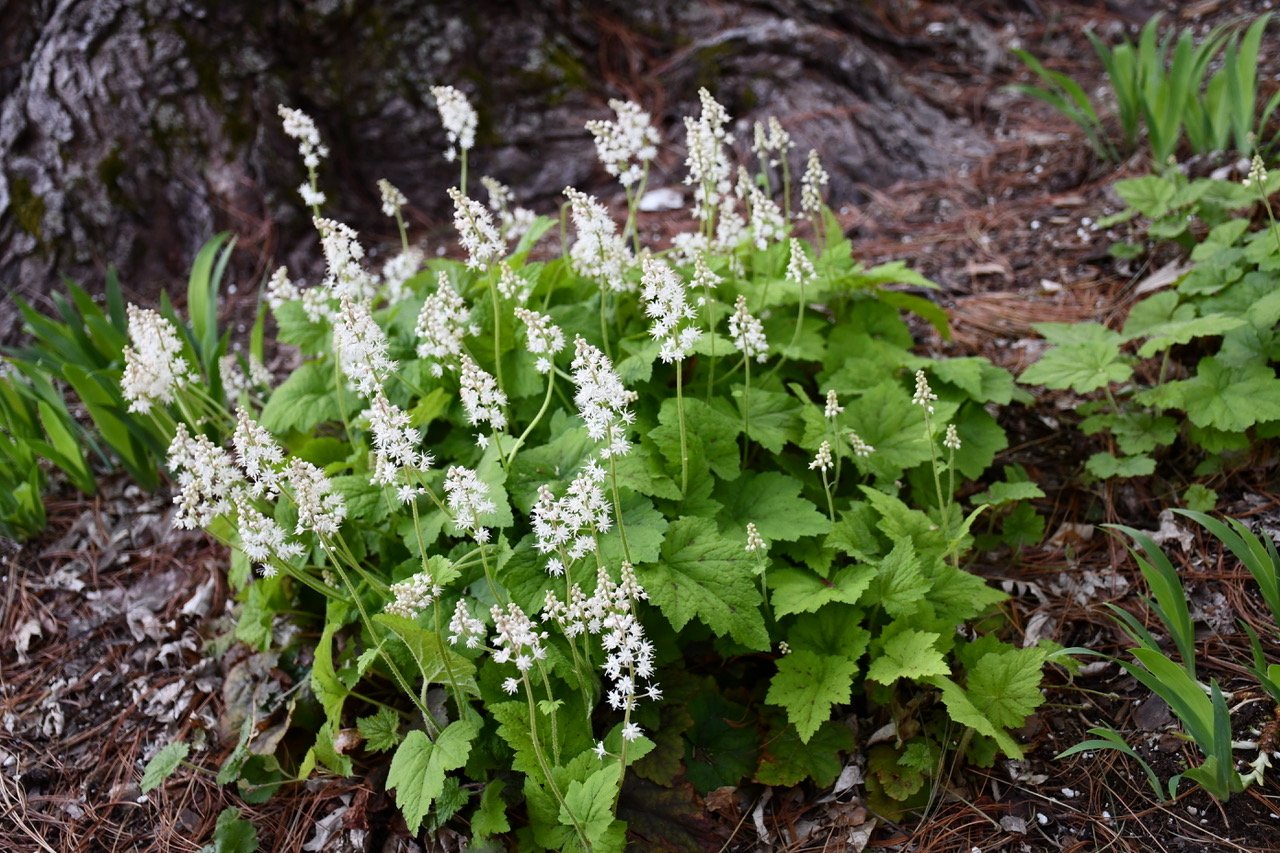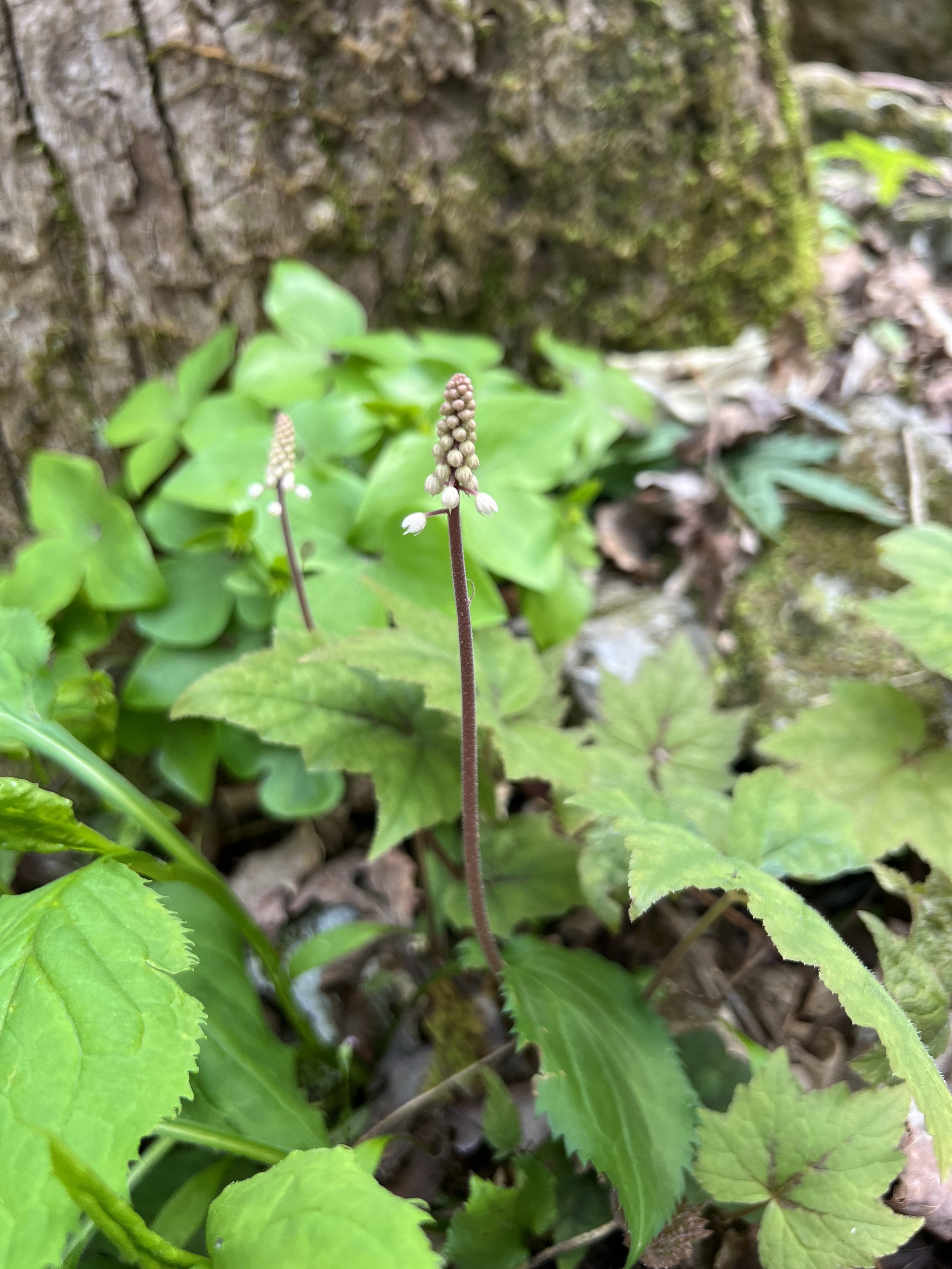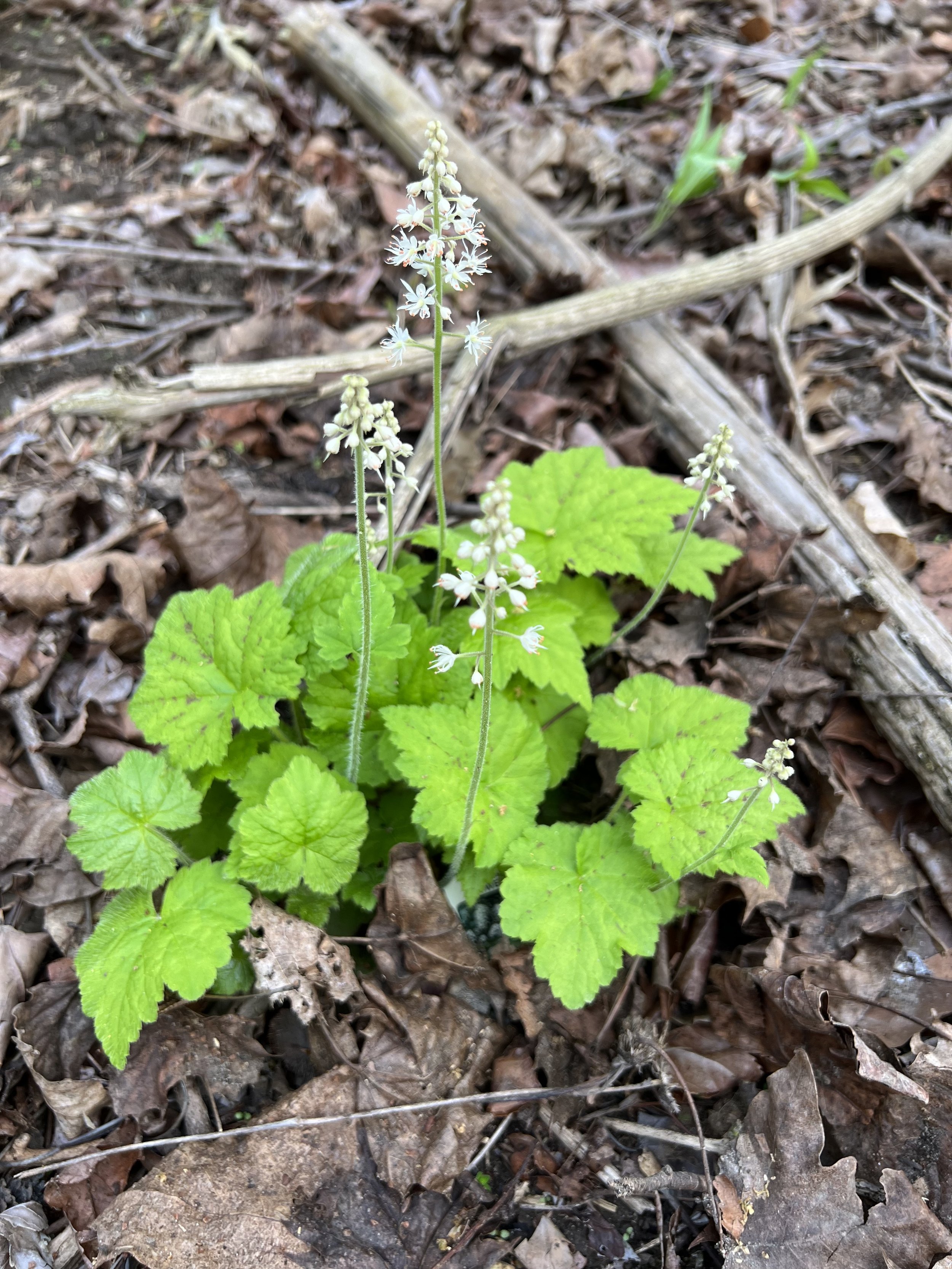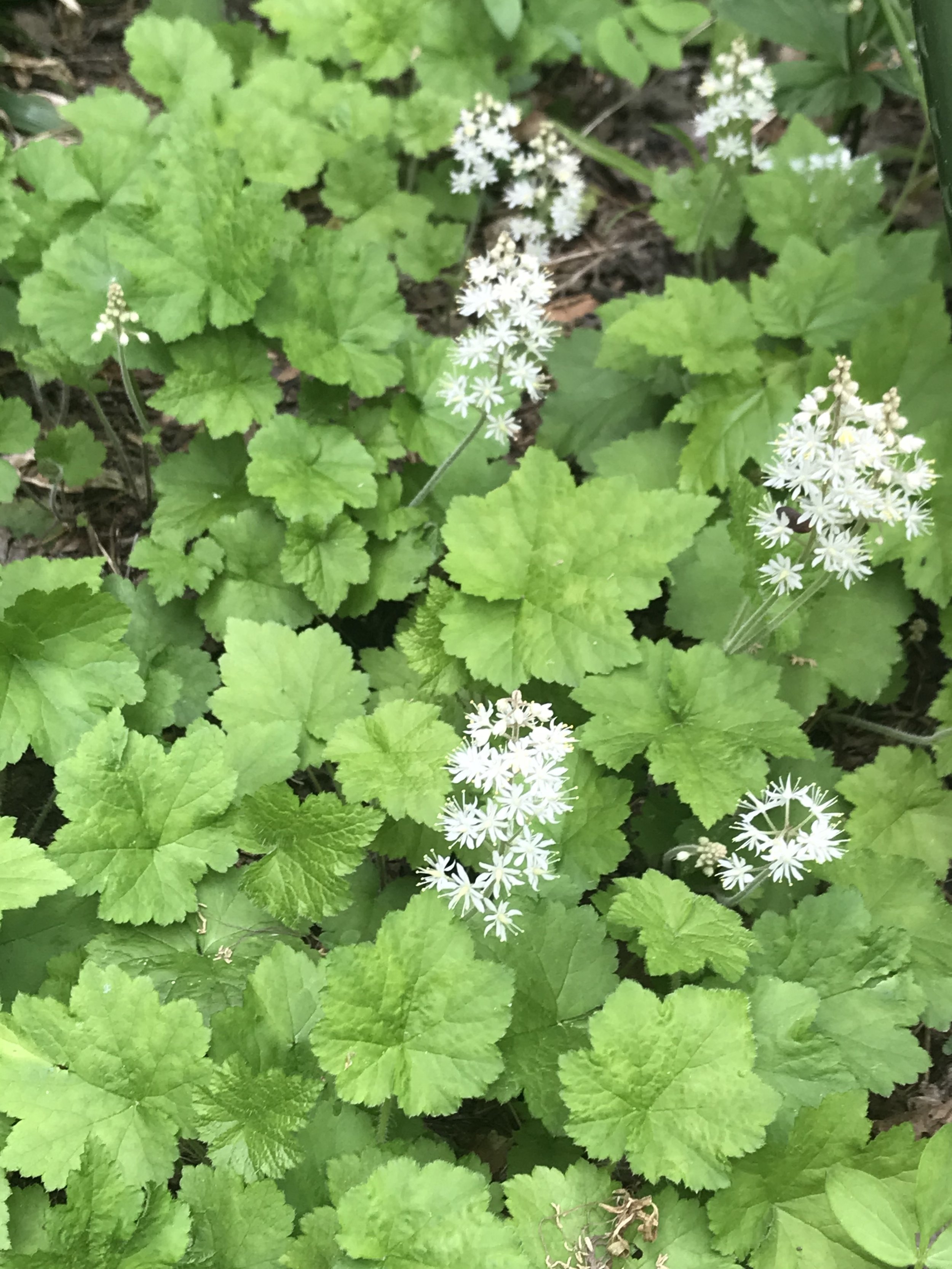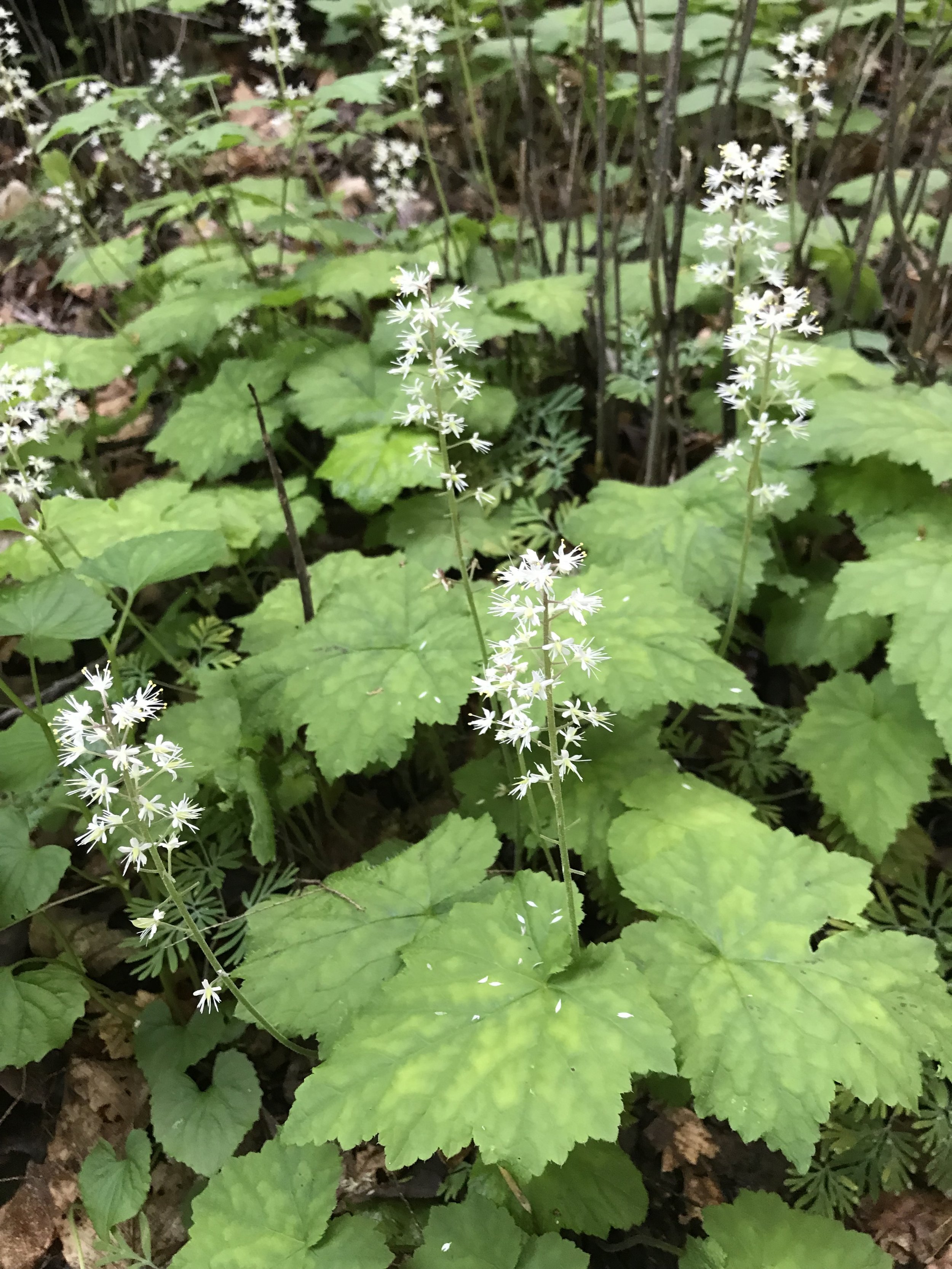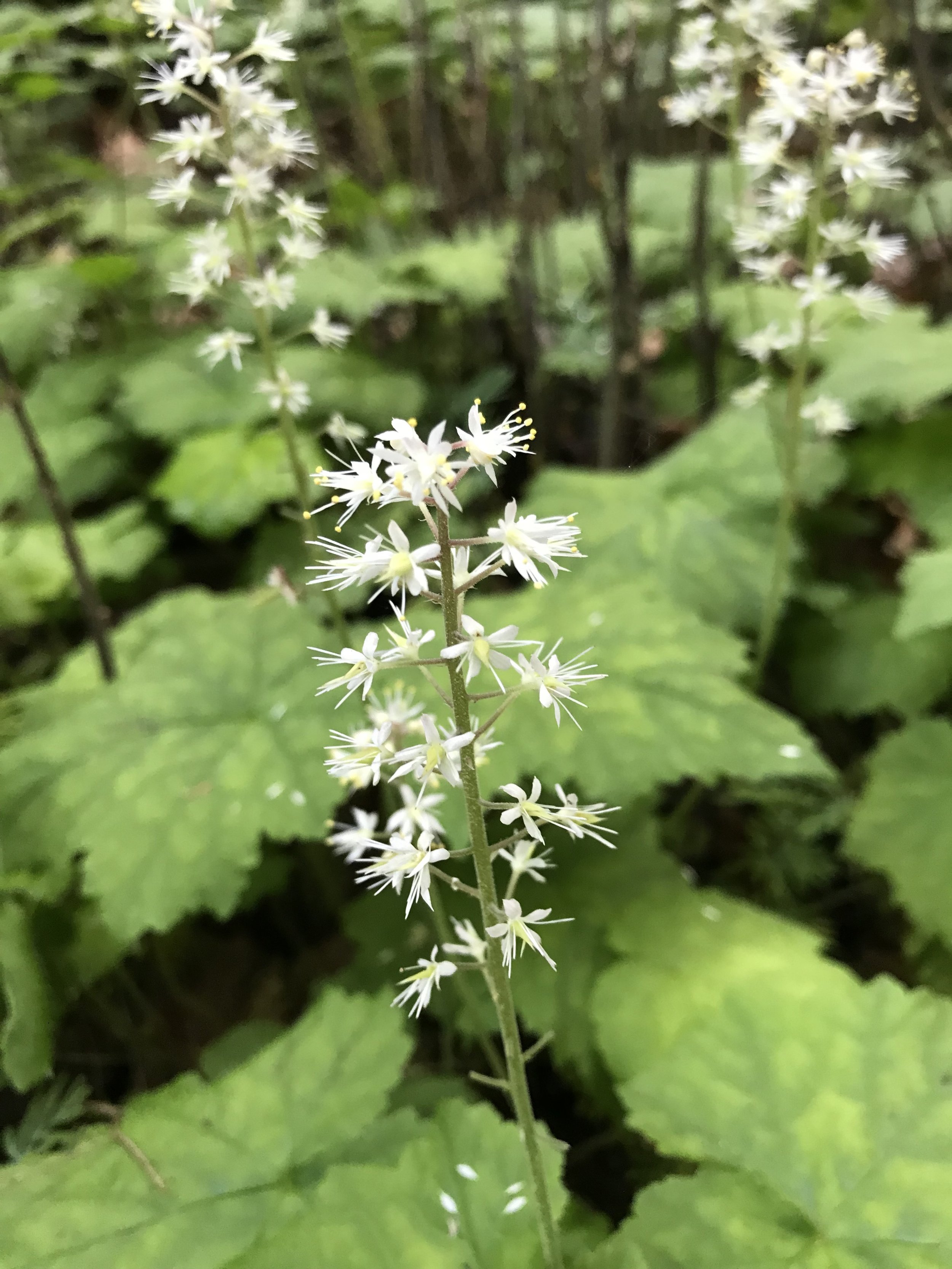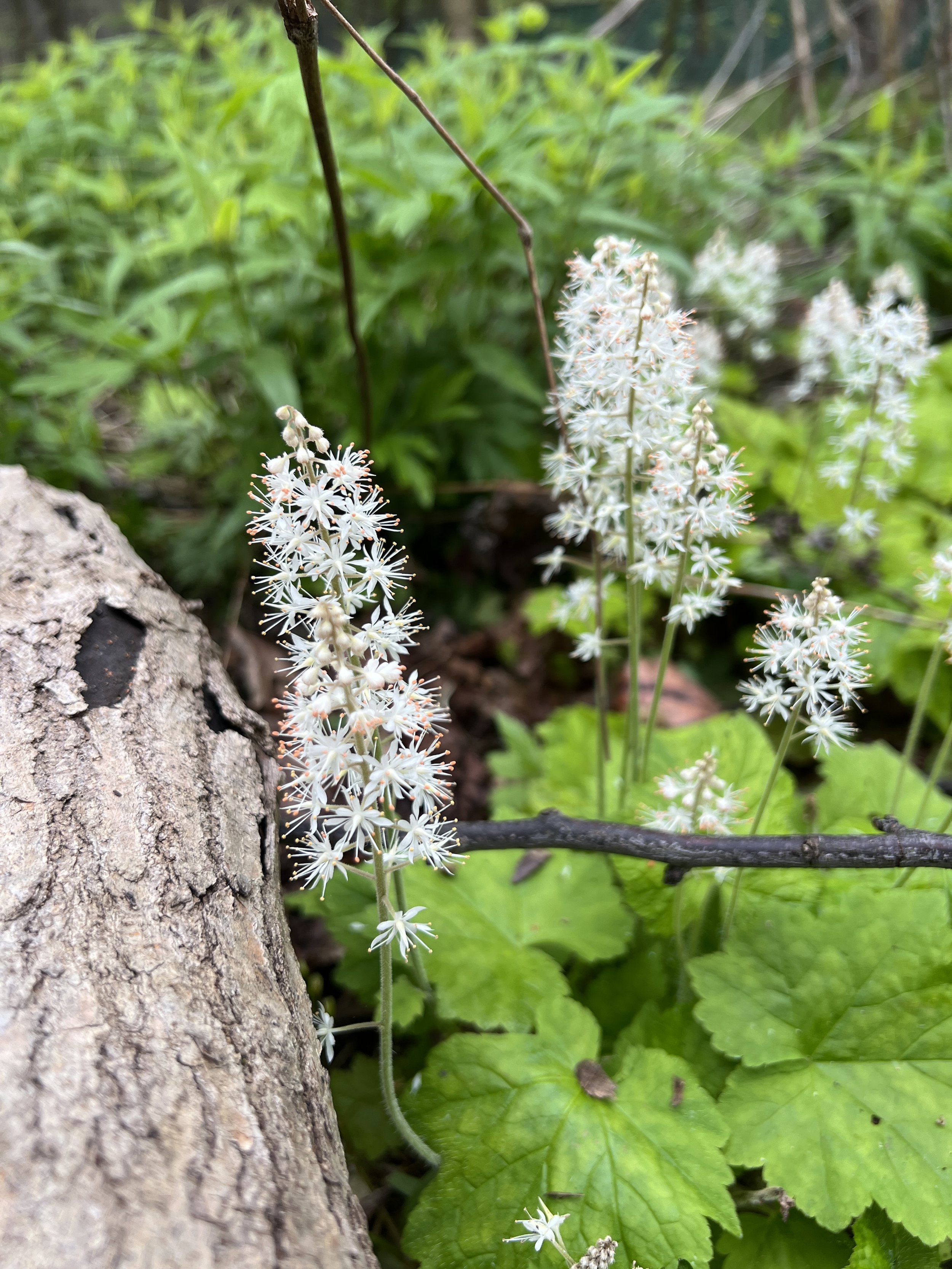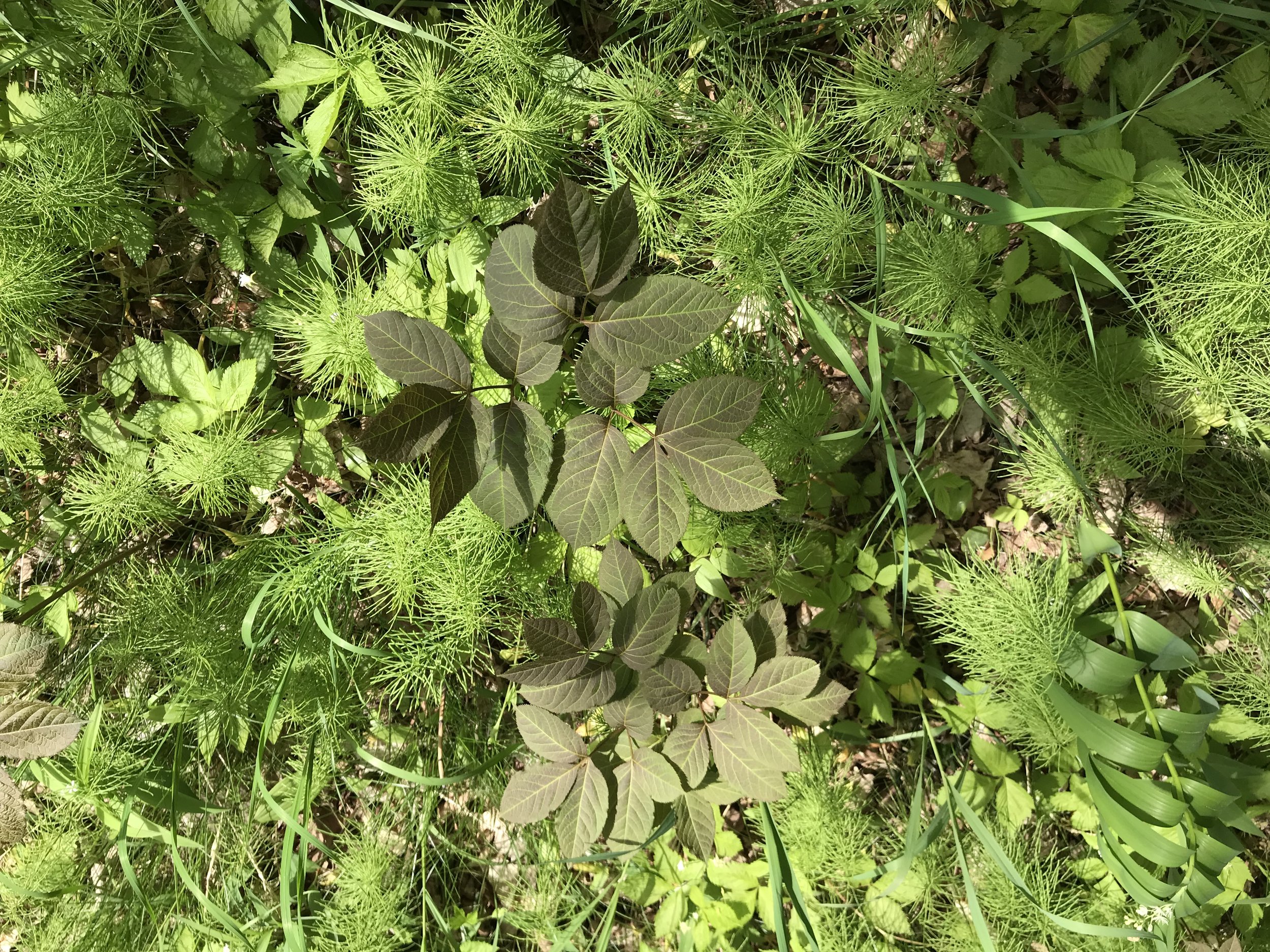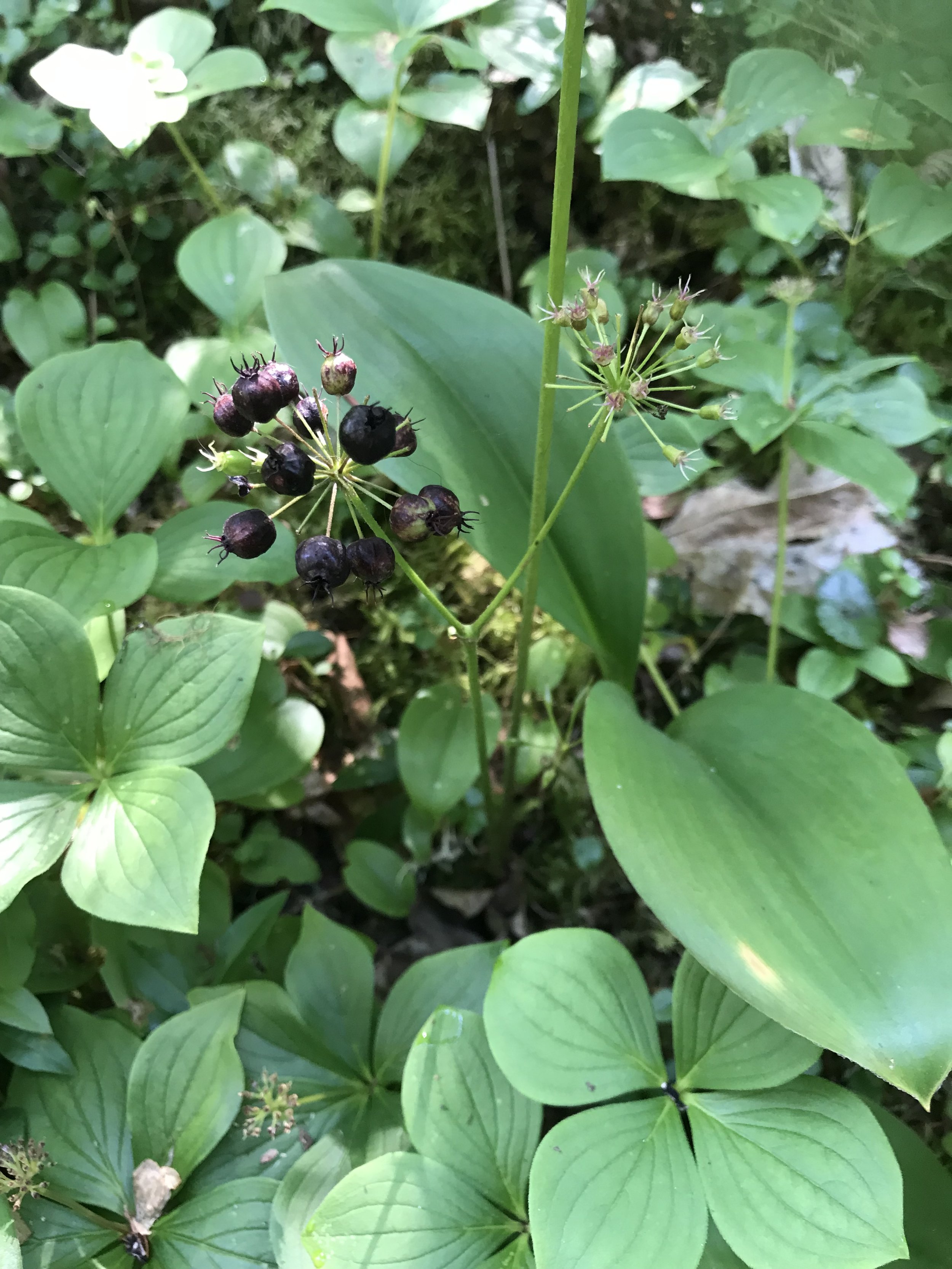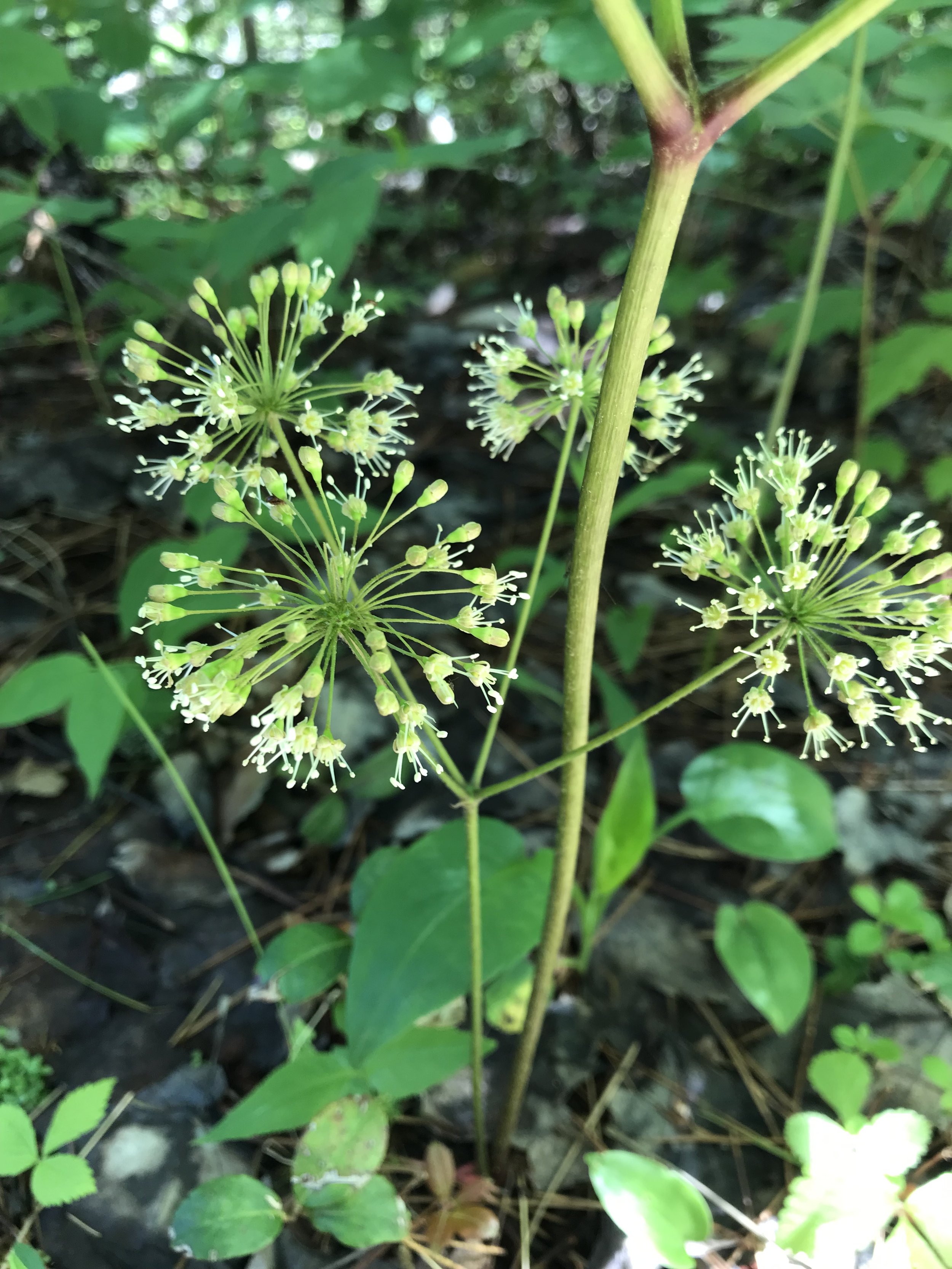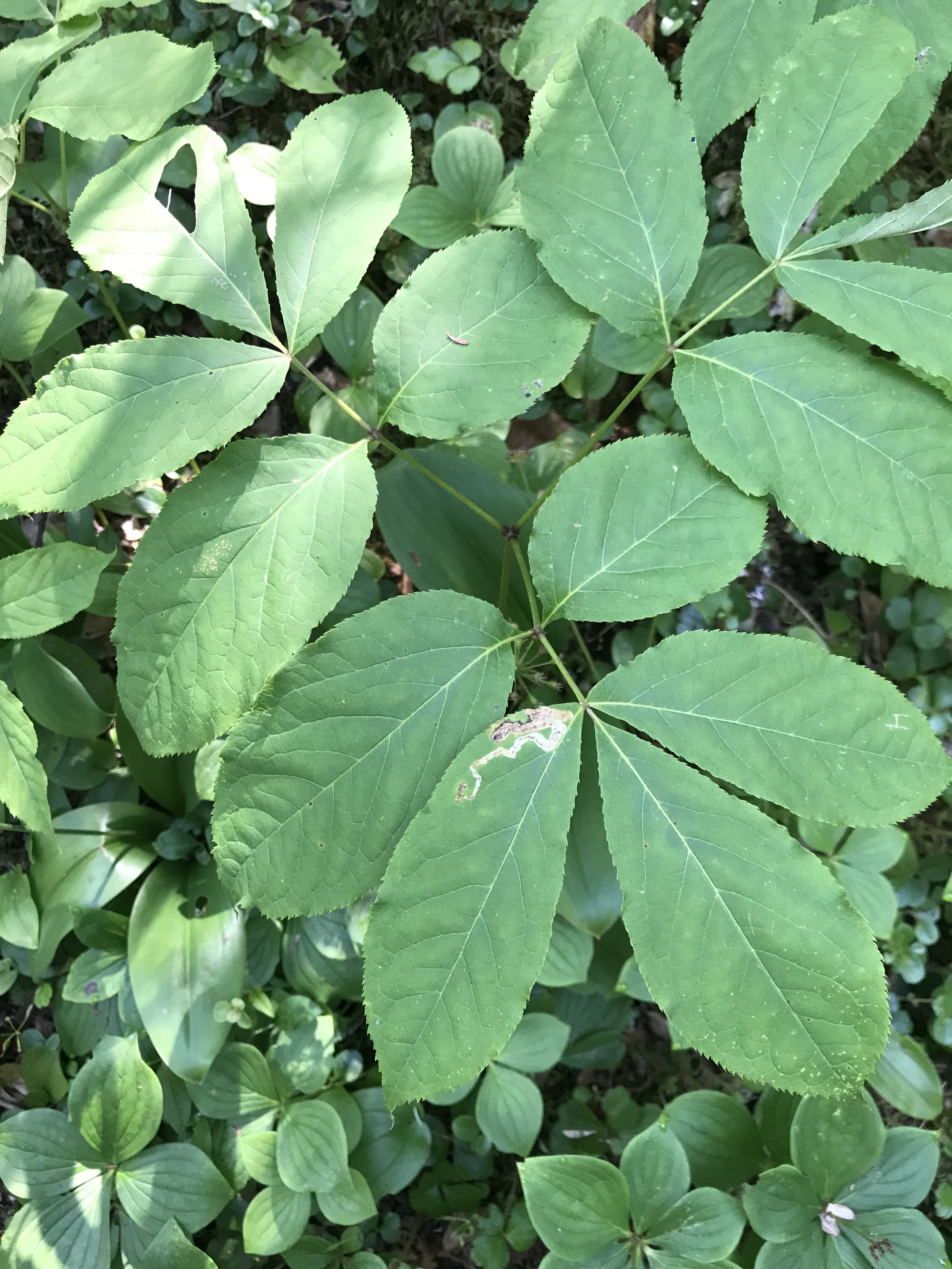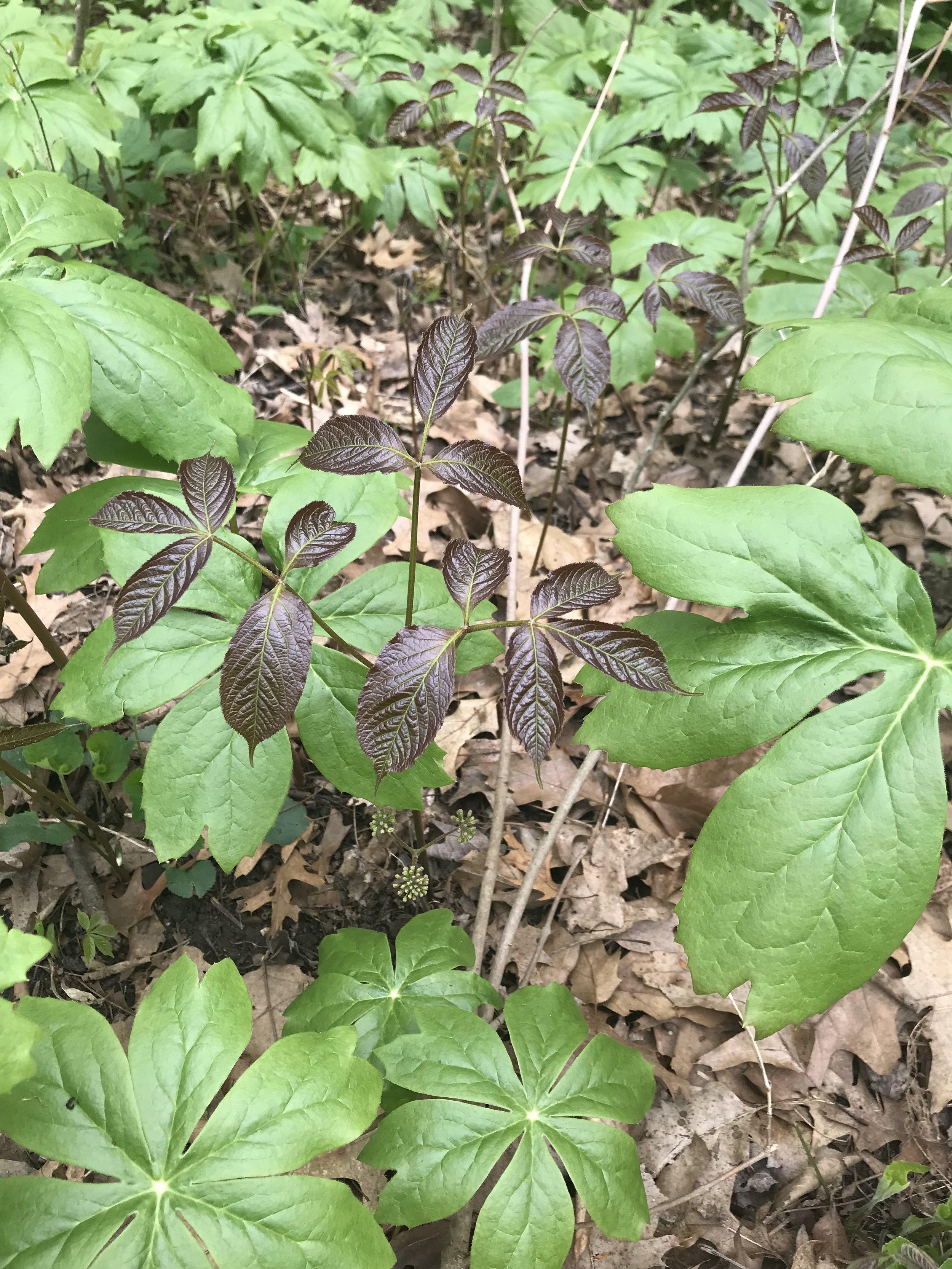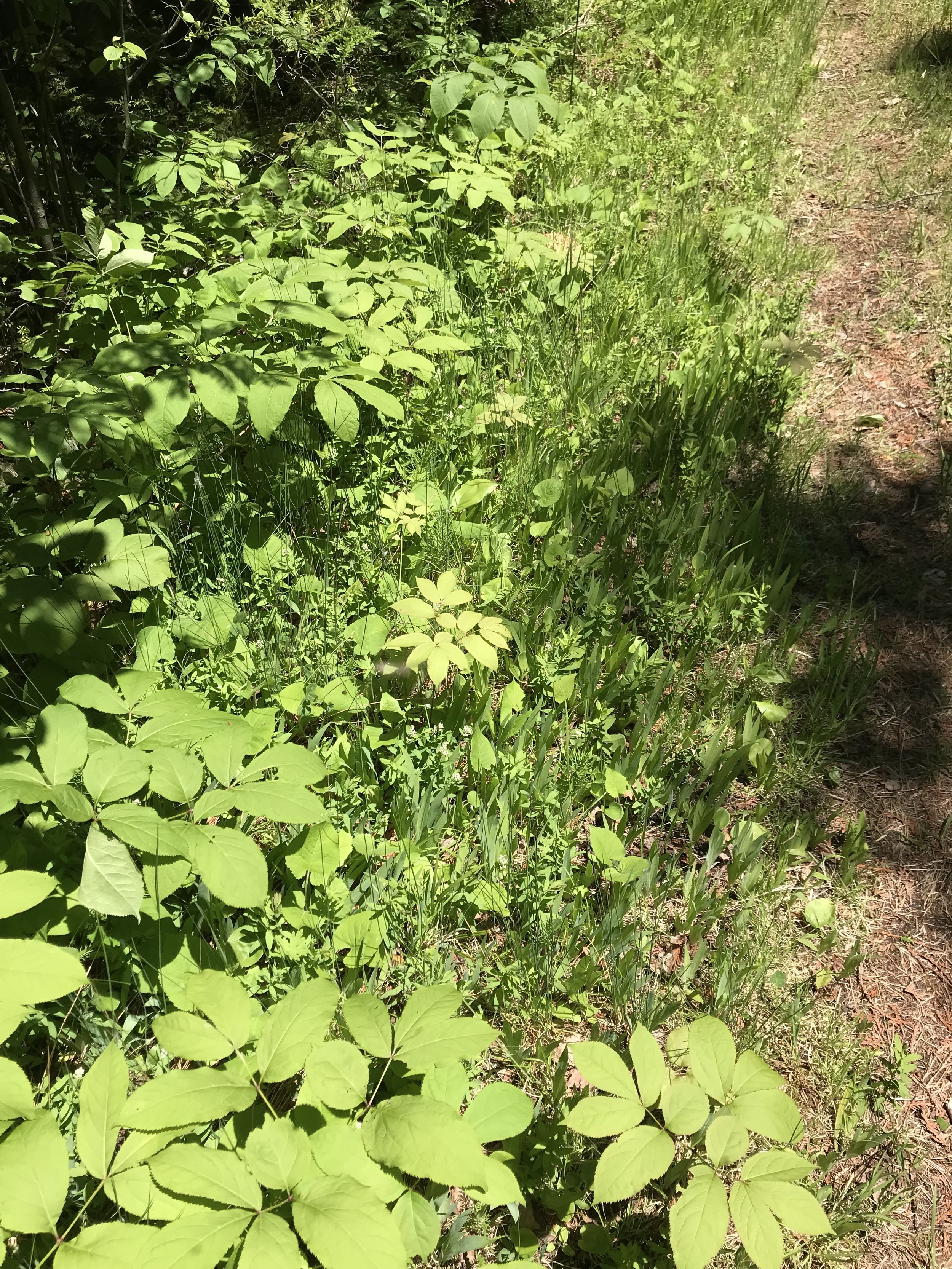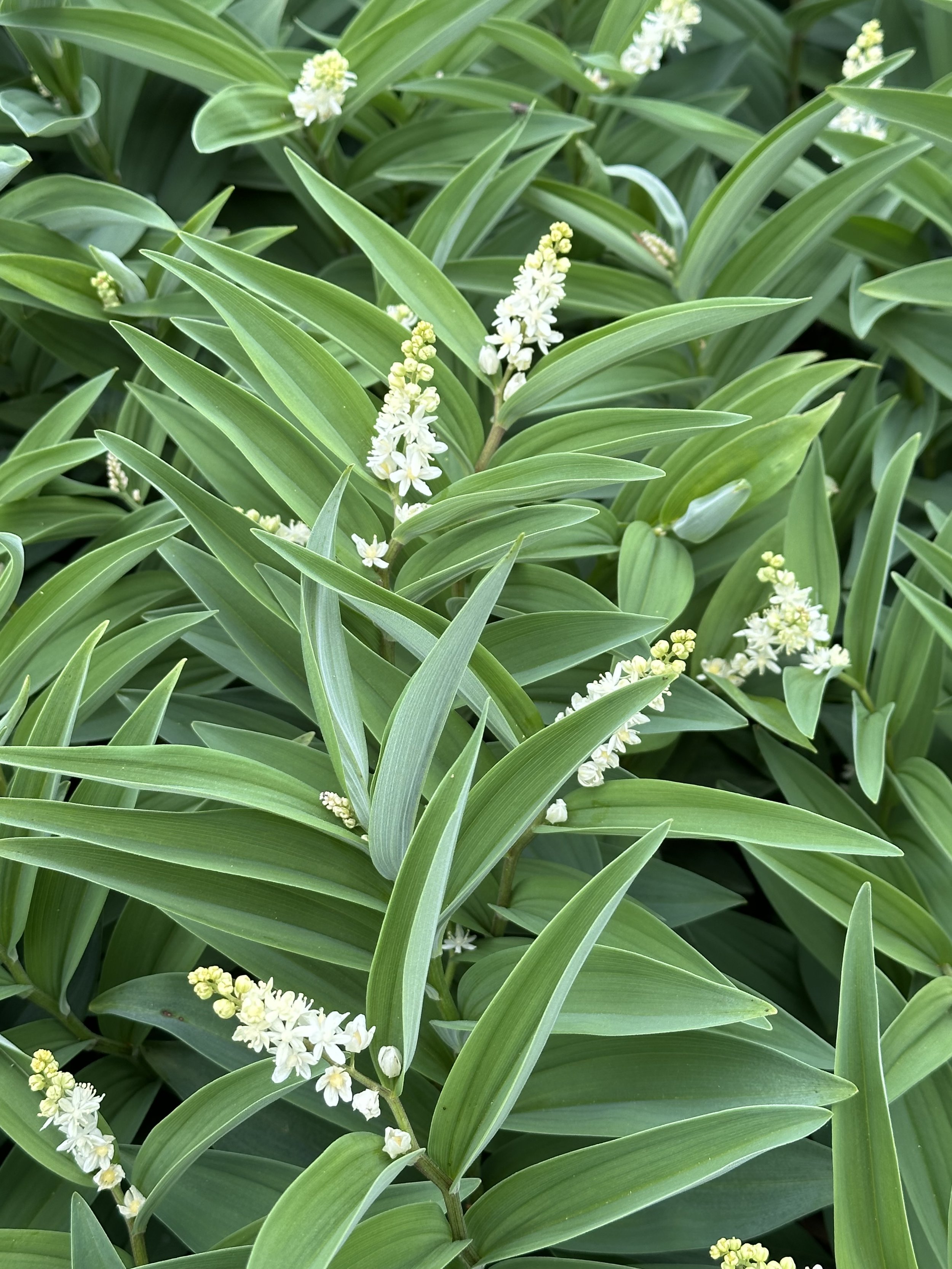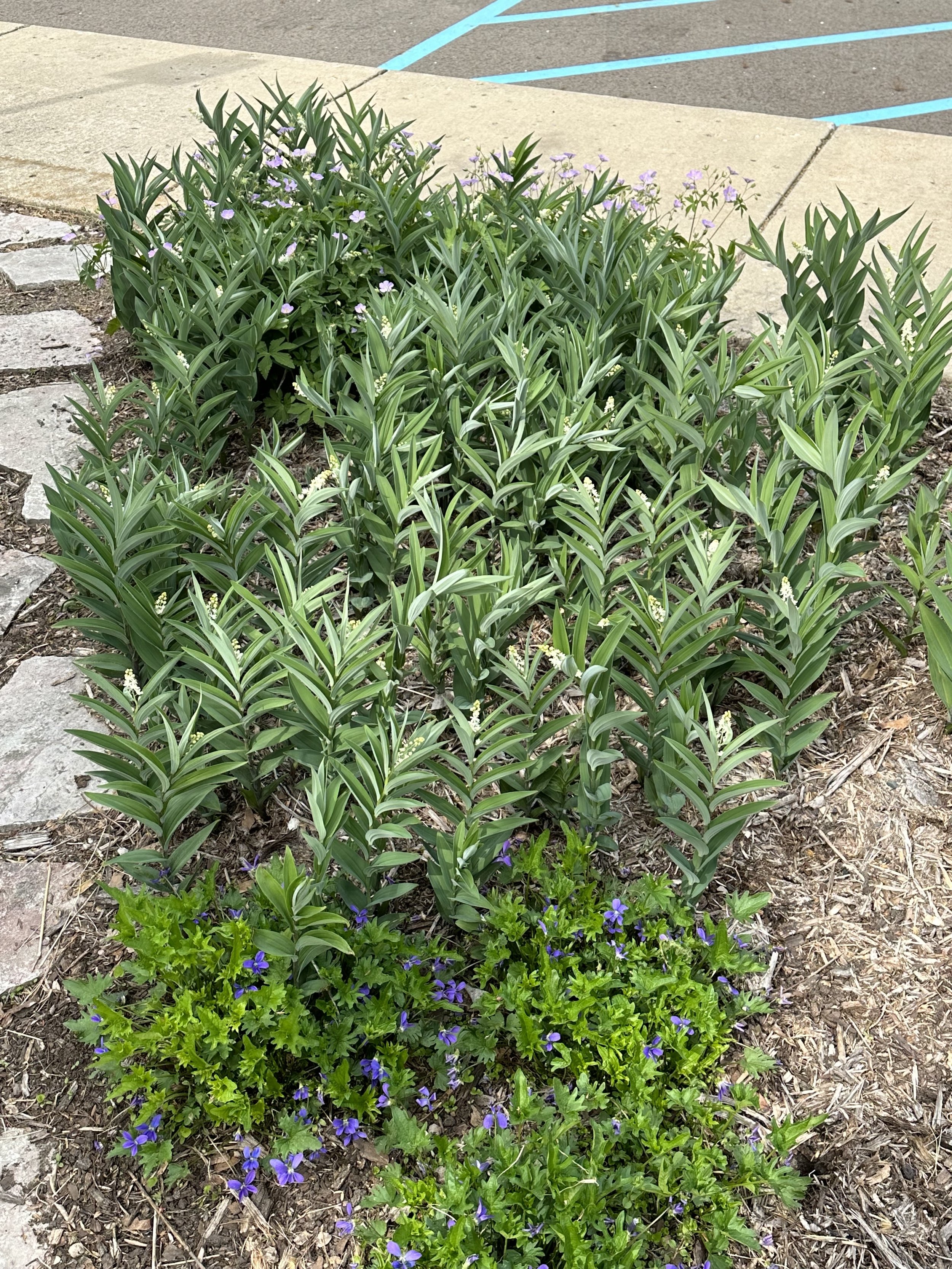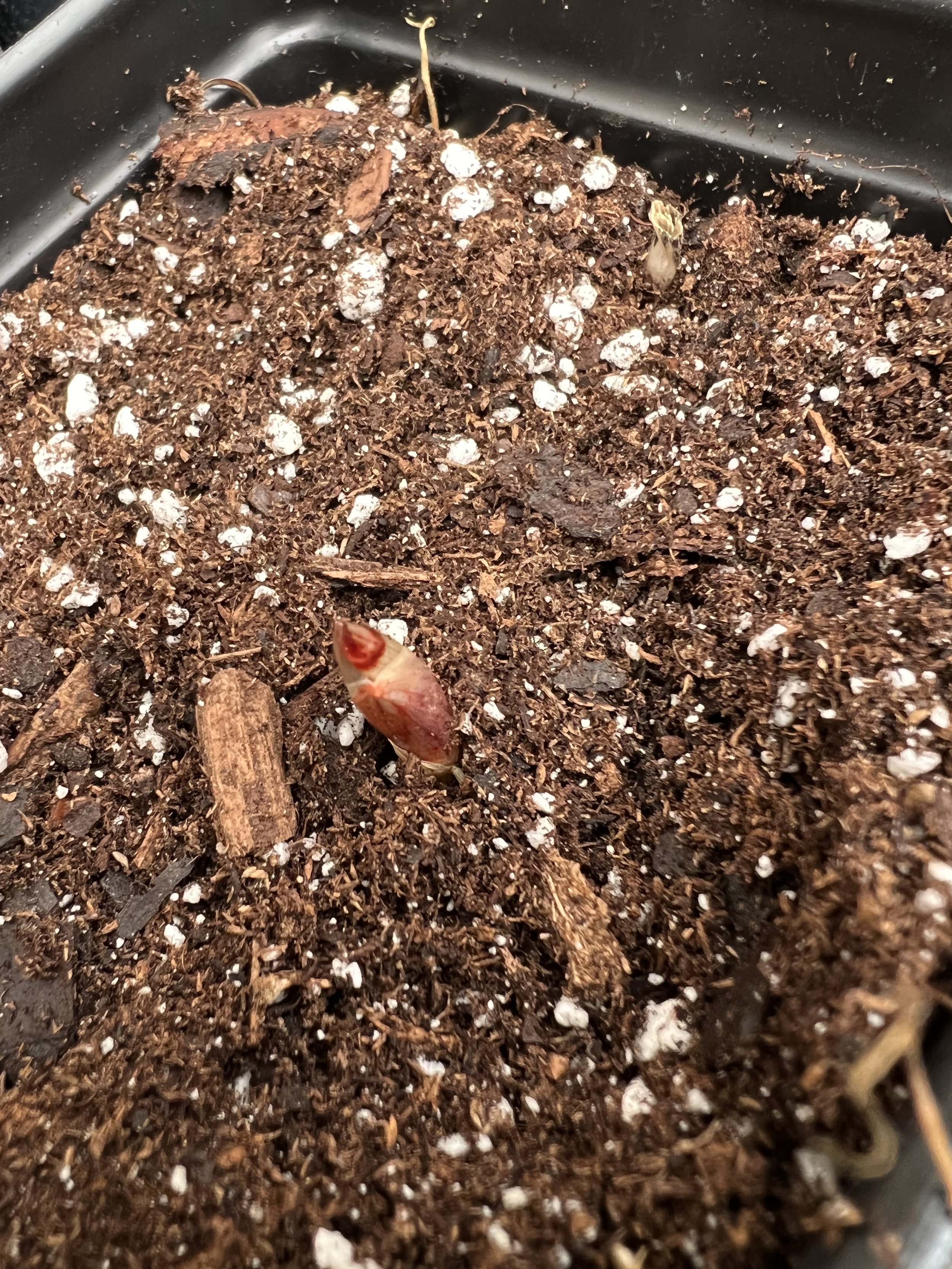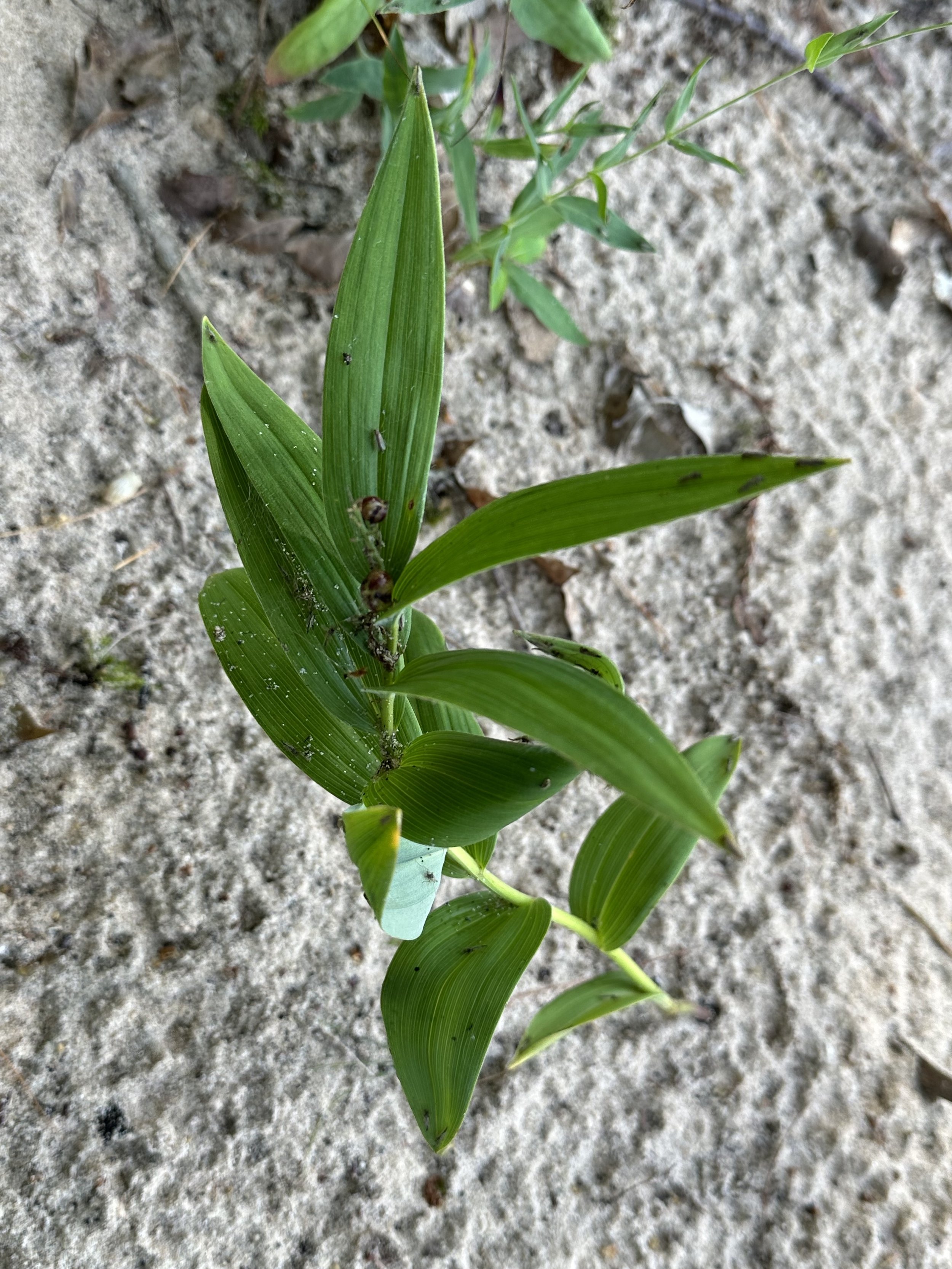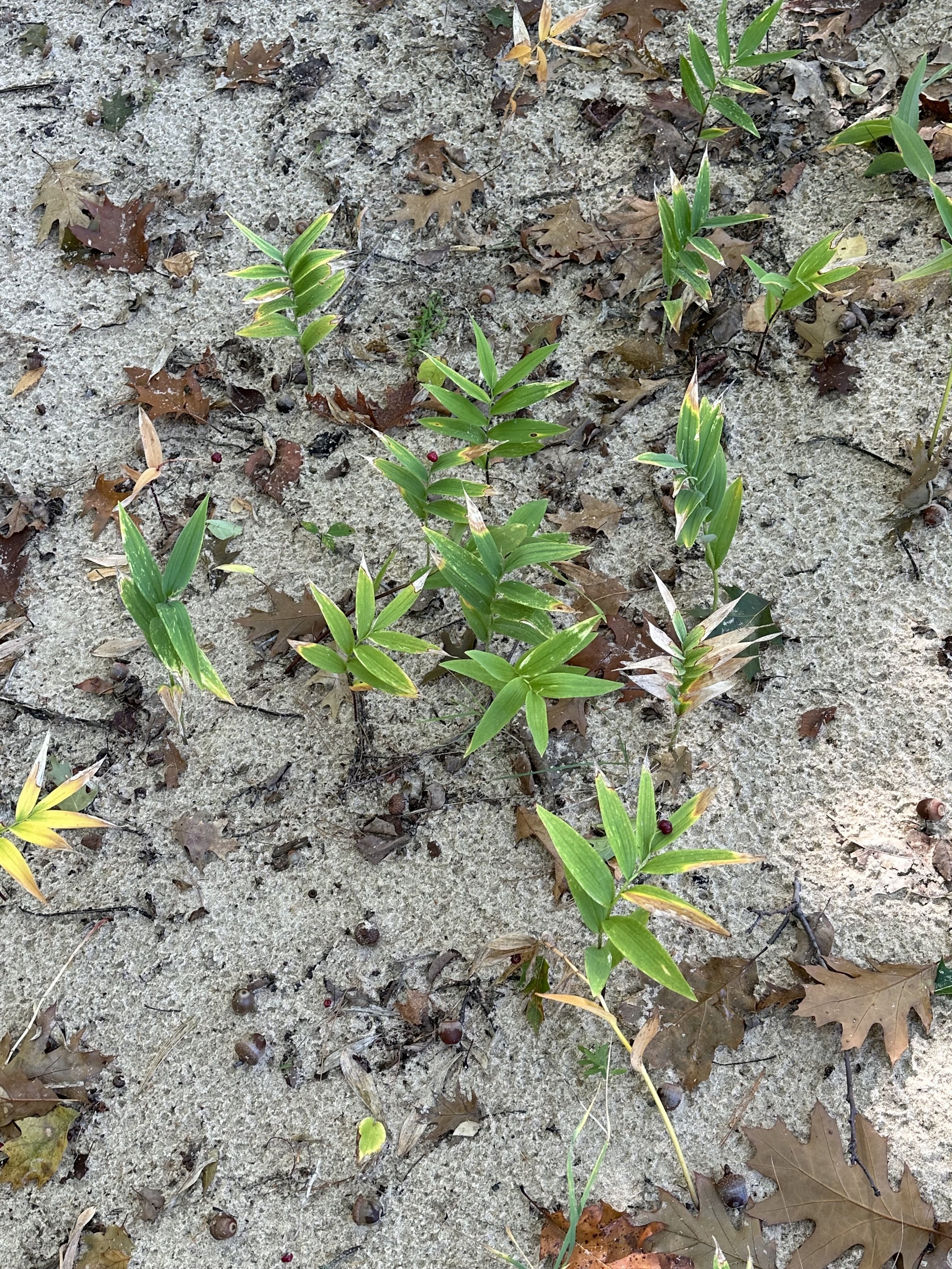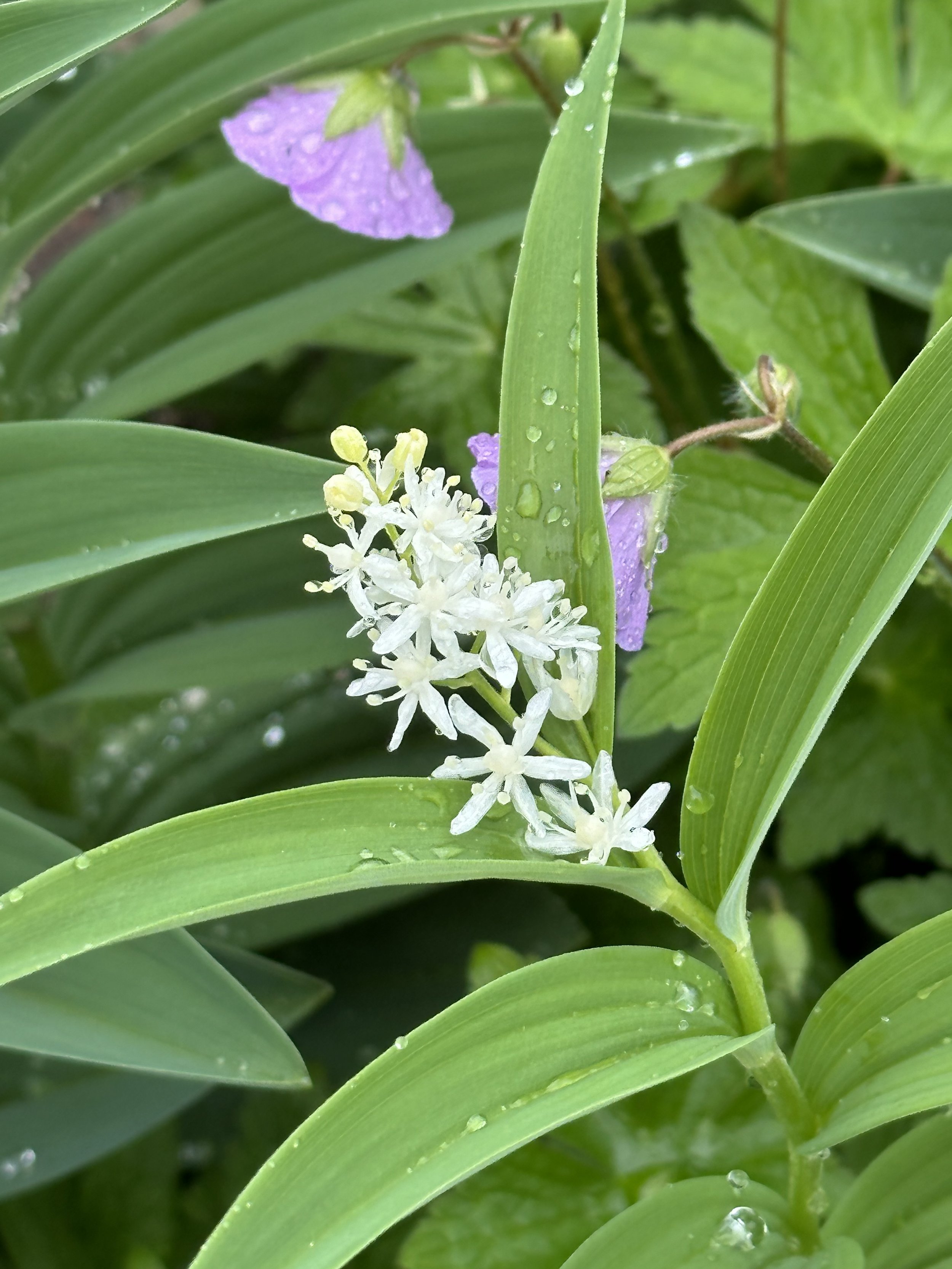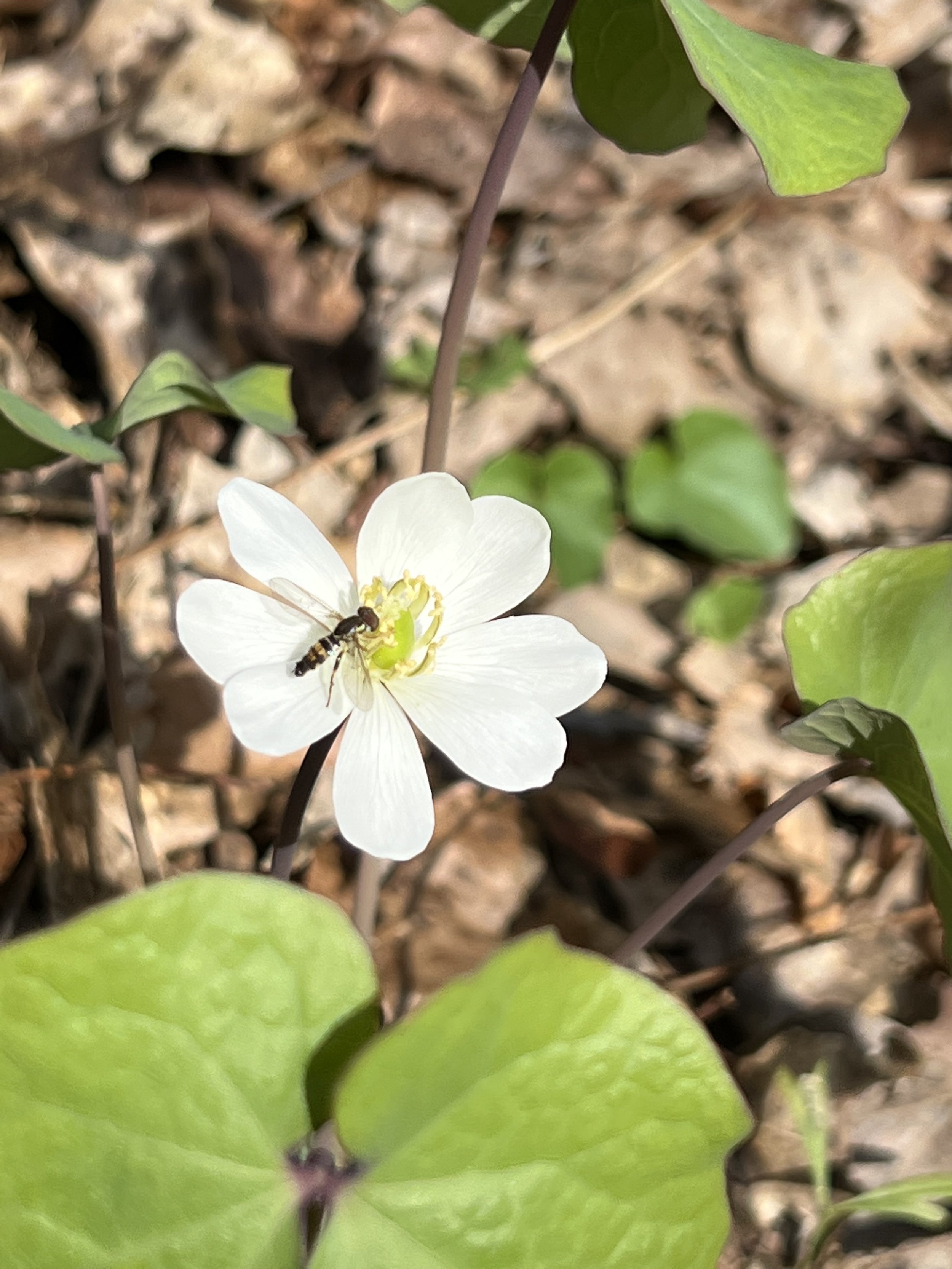 Image 1 of 9
Image 1 of 9

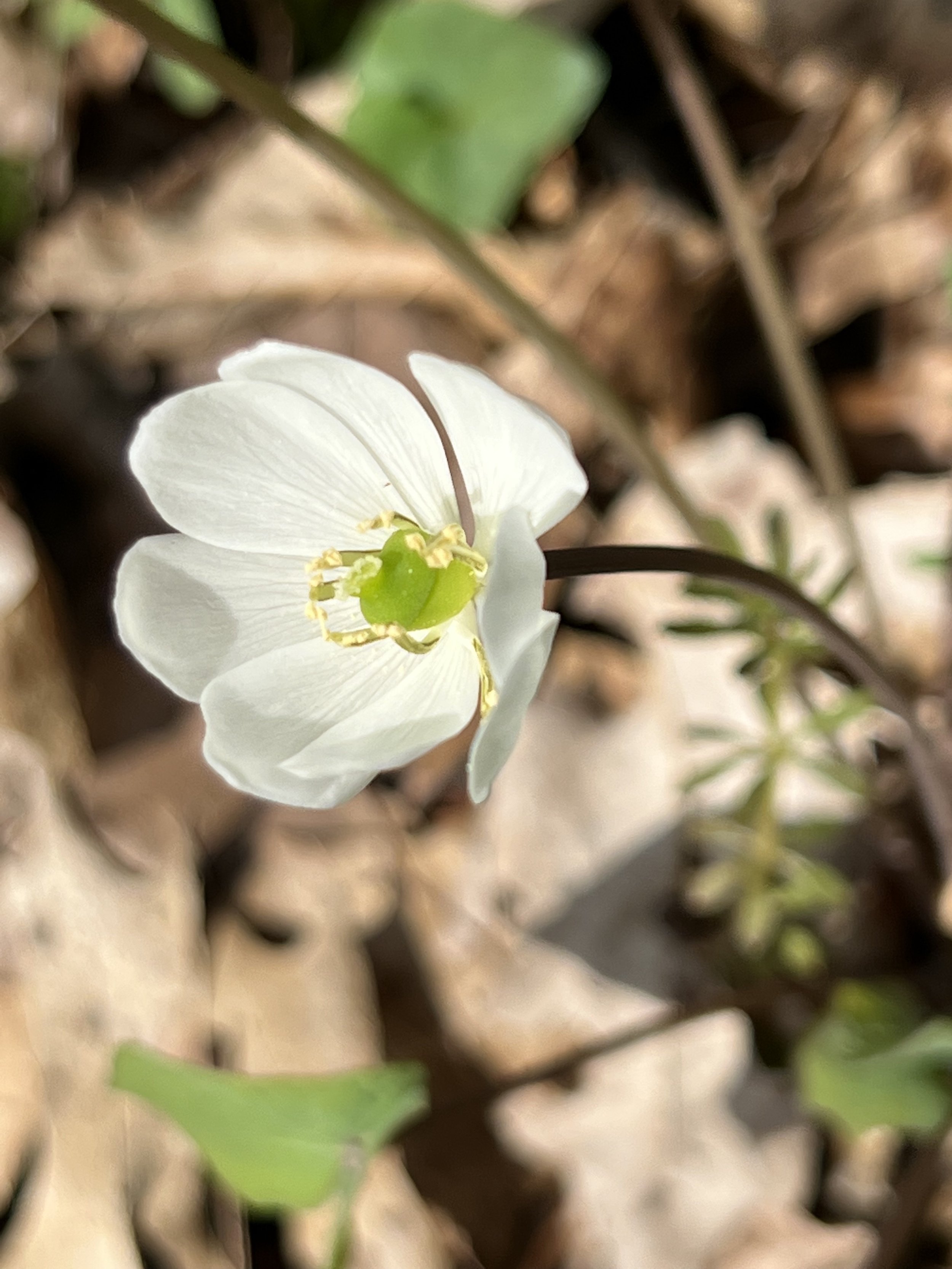 Image 2 of 9
Image 2 of 9

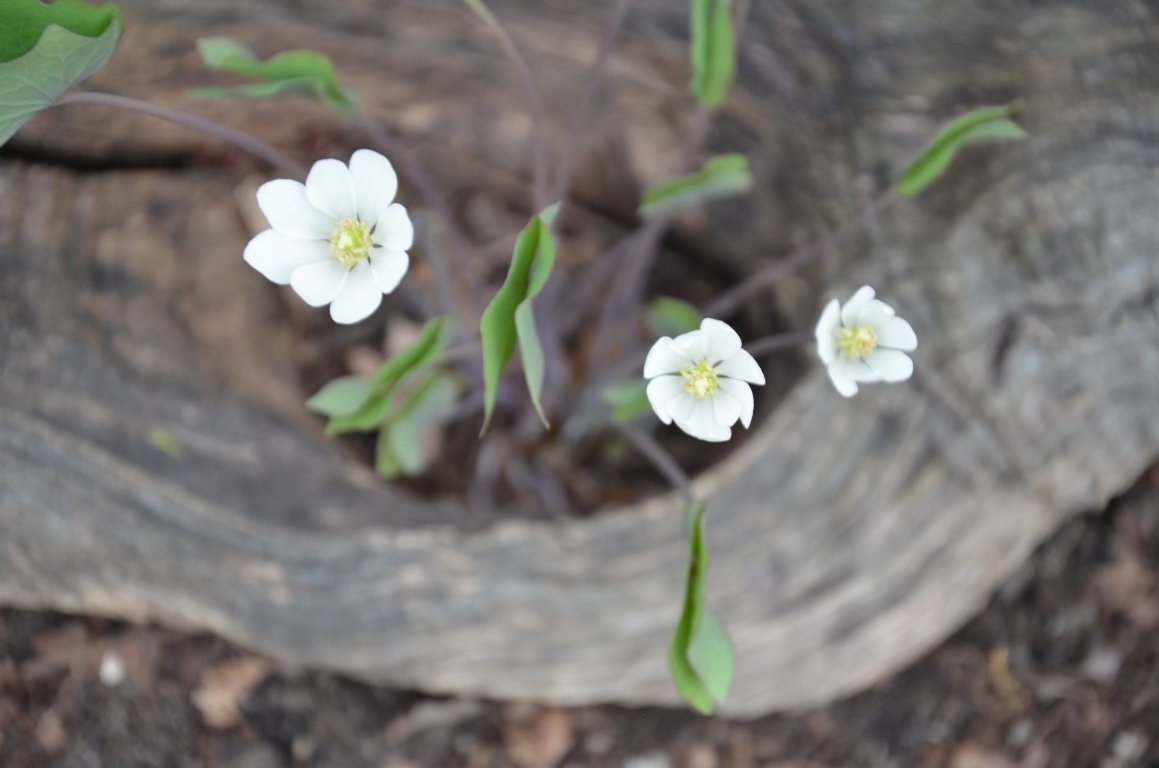 Image 3 of 9
Image 3 of 9

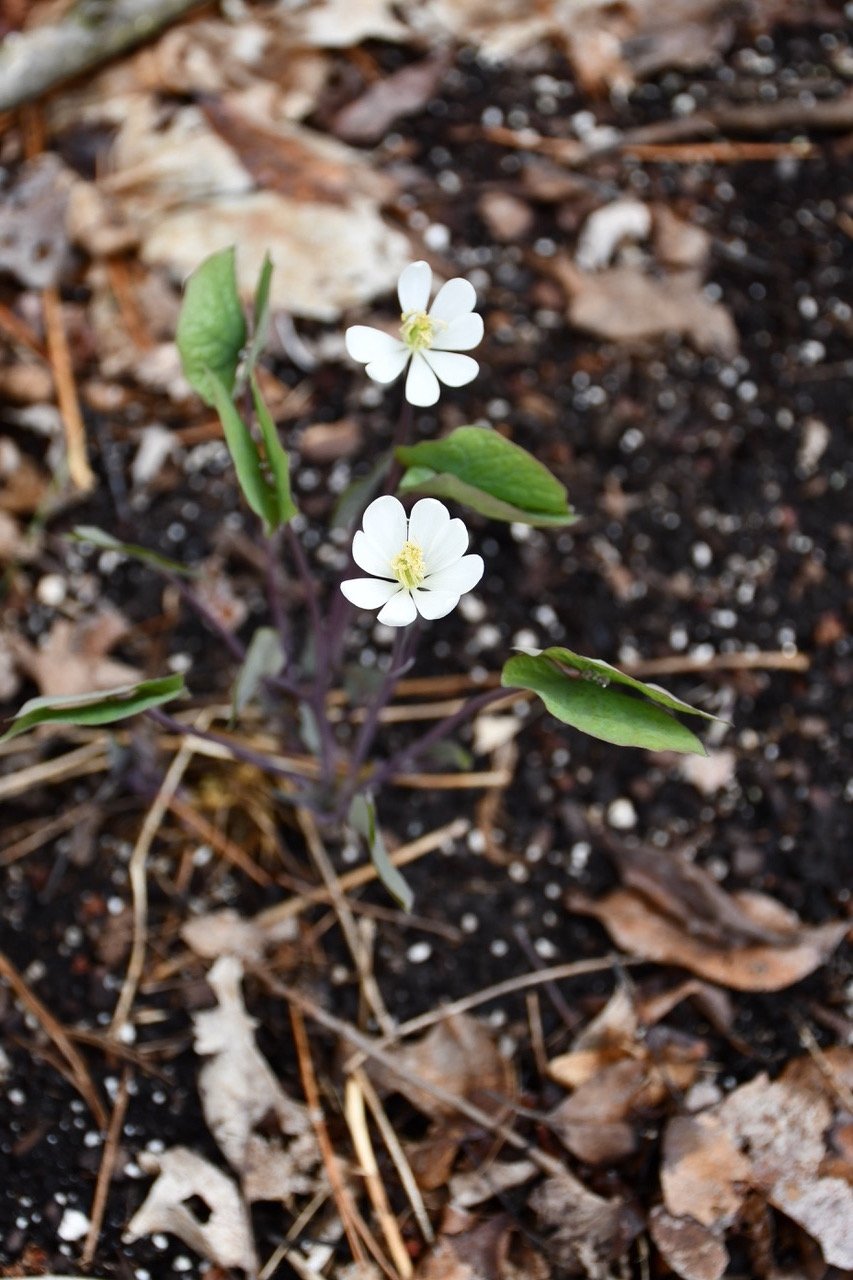 Image 4 of 9
Image 4 of 9

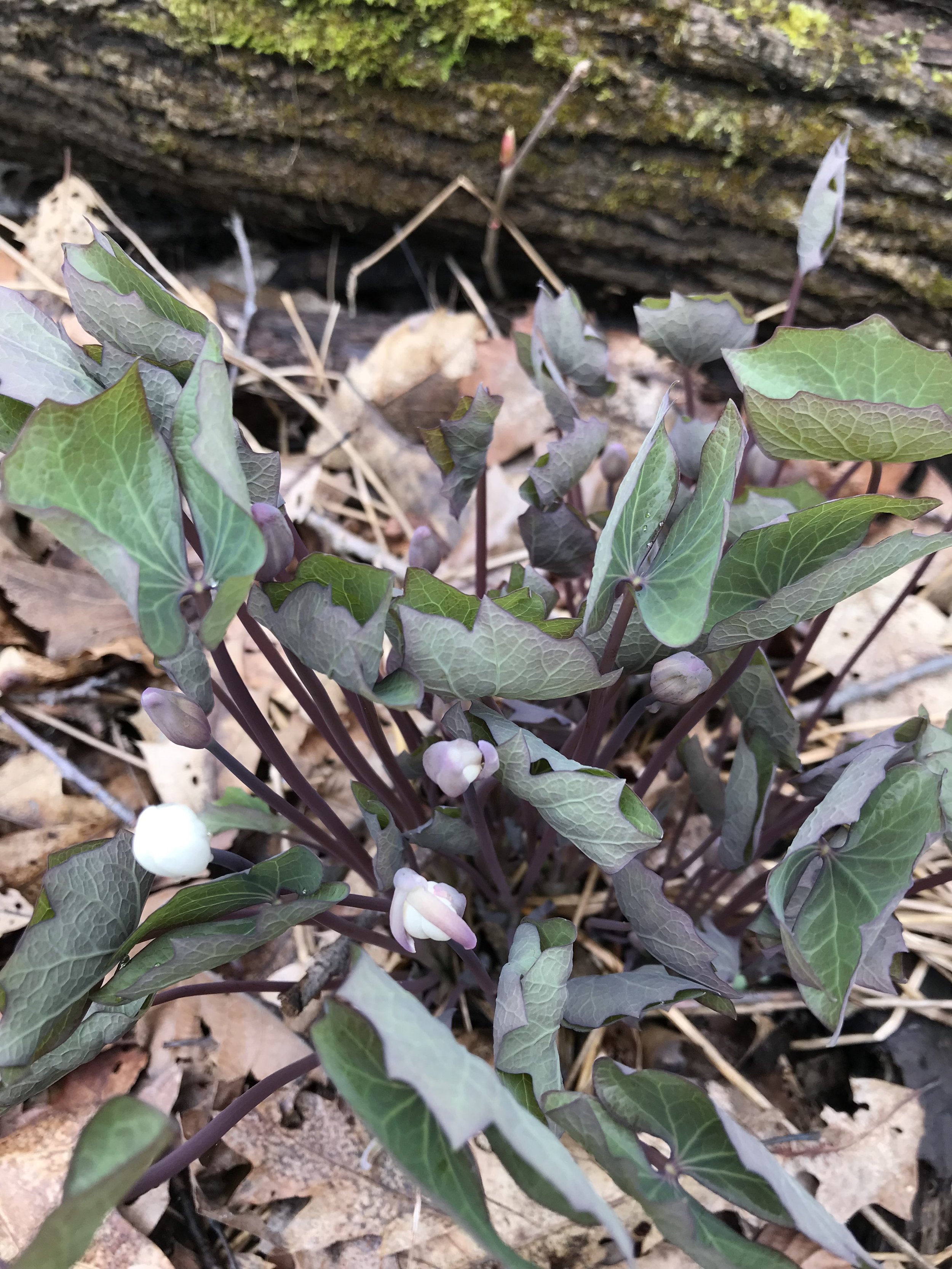 Image 5 of 9
Image 5 of 9

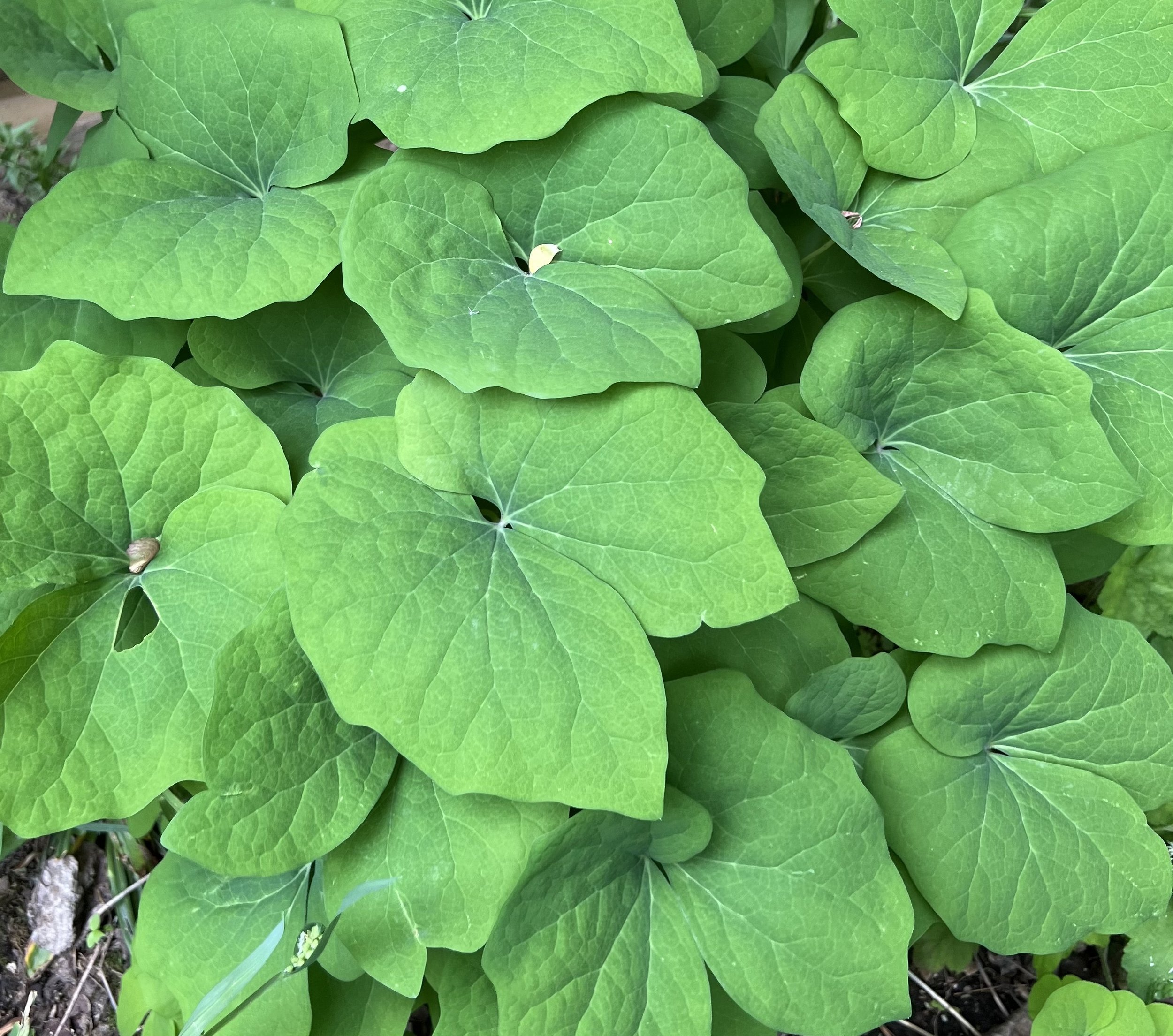 Image 6 of 9
Image 6 of 9

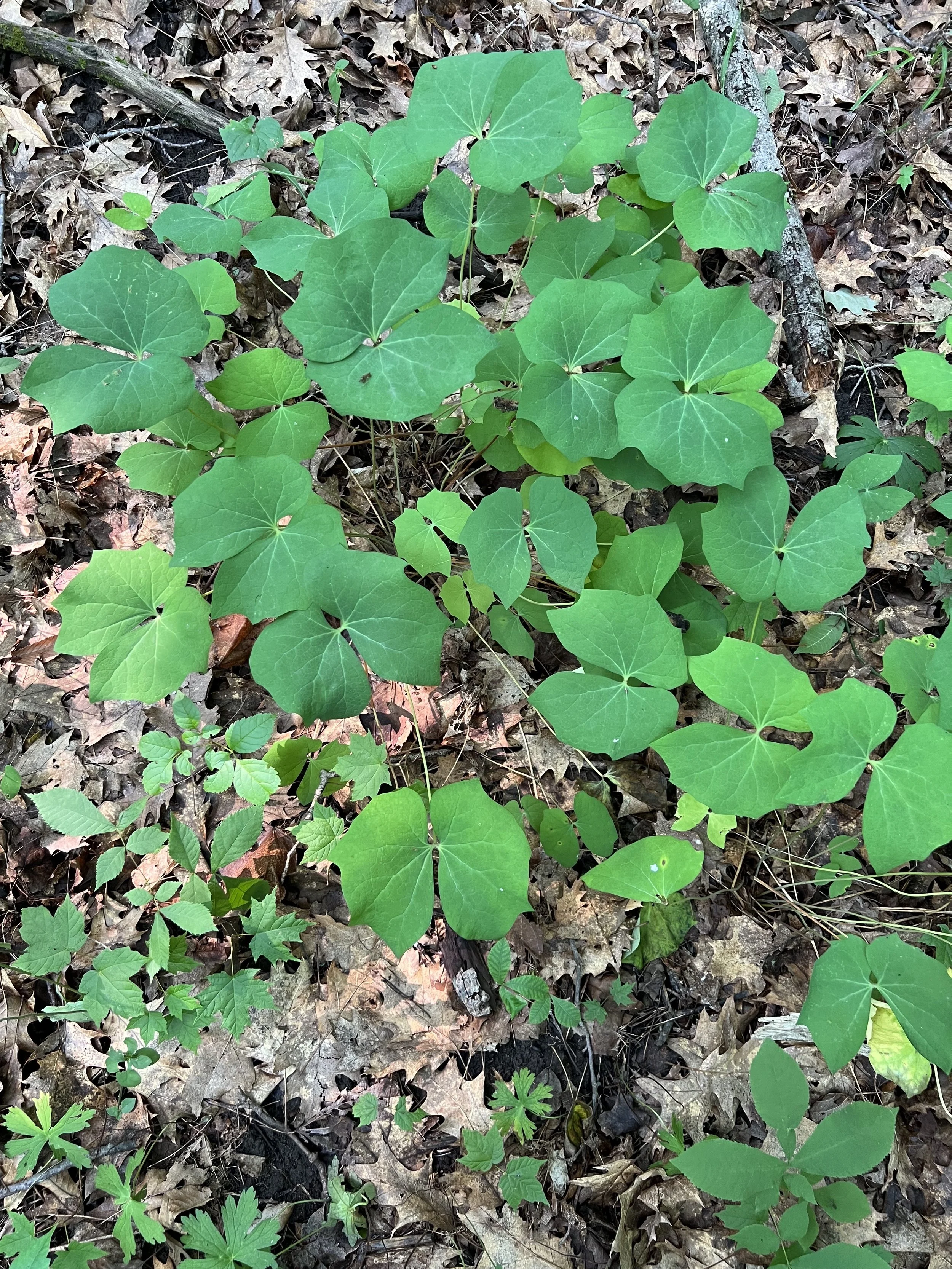 Image 7 of 9
Image 7 of 9

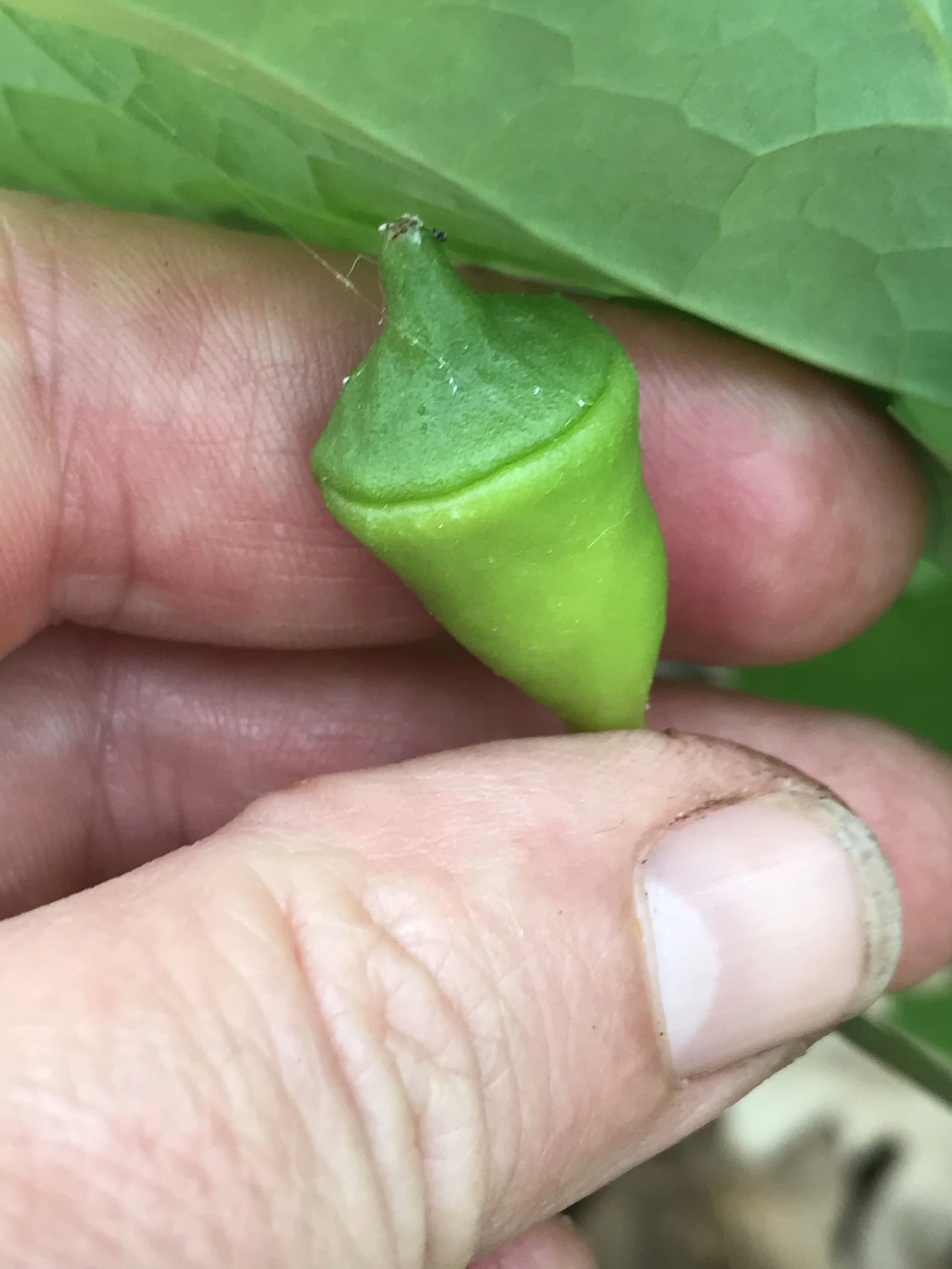 Image 8 of 9
Image 8 of 9

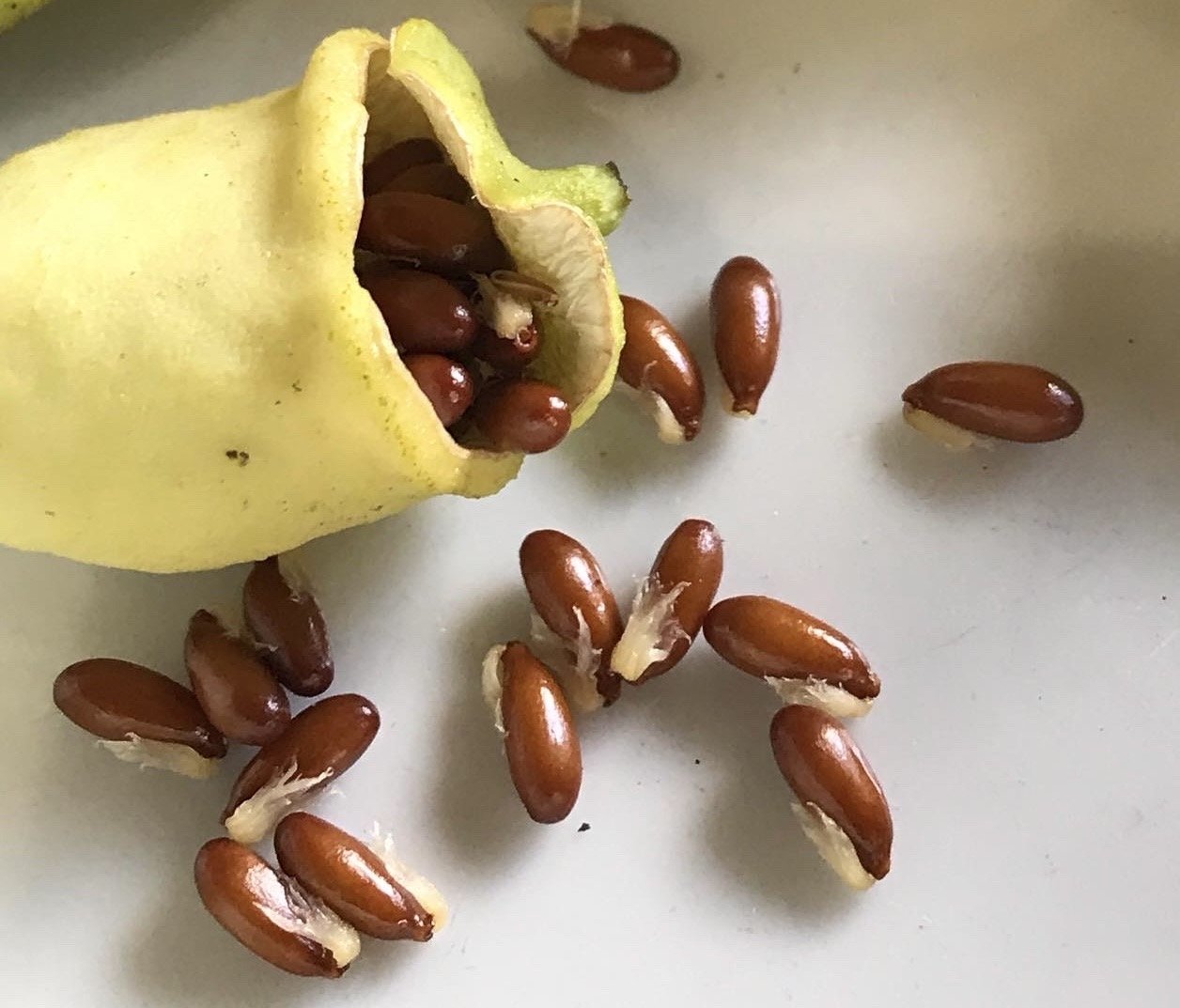 Image 9 of 9
Image 9 of 9










Twinleaf (Jeffersonia diphylla)
Twinleaf (Jeffersonia diphylla) may have the most ephemeral flowers of all the spring wildflowers as they don’t usually last more than a day. However, this plant is not a true ephemeral as it keeps its leaves up and photosynthesizing throughout much of the summer.
The flowers themselves look a lot like bloodroot but the plants are taller, up to 18 inches and the leaves have a unique shape, looking somewhat like a bow tie. The leaves appear at the end of stalks and while it looks like two mirror image leaves, it is actually a single leaf with two lobes. Flowers are blooming as leaves are emerging. The leaves then overtake the flowers, hiding the developing ovary underneath.
Like bloodroot, flowers of twinleaf don’t contain nectar. The flowers attract various flies, beetles and bees who must settle for a pollen meal, finding no nectar.
The ovary in the center of the flower expands after pollination. It looks like a tiny vessel with a lid. The lid eventually opens spilling the seeds onto the ground below the mother plant. These seeds have the fleshy appendage, an eliasome, attached which attracts ants who disperse the seeds.
While twinleaf can be abundant where it is found—floodplains and the hills above floodplains—it is rather uncommon and Michigan Flora categorizes this plant as Special Concern. It is native in the southern half of the lower peninsula, but it is uncommon throughout its range.
Twinleaf (Jeffersonia diphylla)
Michigan Flora reference page for state distribution: Twinleaf
height: 18 inches
bloom time: March-May
soil: rich, woodland soil (heavy clay won’t work)
sun: sun in early spring, shade in summer
plant spacing: 10”
flower: white
life cycle:perennial
family: Berberidaceae
Michigan conservation status: special concern
Twinleaf (Jeffersonia diphylla) may have the most ephemeral flowers of all the spring wildflowers as they don’t usually last more than a day. However, this plant is not a true ephemeral as it keeps its leaves up and photosynthesizing throughout much of the summer.
The flowers themselves look a lot like bloodroot but the plants are taller, up to 18 inches and the leaves have a unique shape, looking somewhat like a bow tie. The leaves appear at the end of stalks and while it looks like two mirror image leaves, it is actually a single leaf with two lobes. Flowers are blooming as leaves are emerging. The leaves then overtake the flowers, hiding the developing ovary underneath.
Like bloodroot, flowers of twinleaf don’t contain nectar. The flowers attract various flies, beetles and bees who must settle for a pollen meal, finding no nectar.
The ovary in the center of the flower expands after pollination. It looks like a tiny vessel with a lid. The lid eventually opens spilling the seeds onto the ground below the mother plant. These seeds have the fleshy appendage, an eliasome, attached which attracts ants who disperse the seeds.
While twinleaf can be abundant where it is found—floodplains and the hills above floodplains—it is rather uncommon and Michigan Flora categorizes this plant as Special Concern. It is native in the southern half of the lower peninsula, but it is uncommon throughout its range.
Twinleaf (Jeffersonia diphylla)
Michigan Flora reference page for state distribution: Twinleaf
height: 18 inches
bloom time: March-May
soil: rich, woodland soil (heavy clay won’t work)
sun: sun in early spring, shade in summer
plant spacing: 10”
flower: white
life cycle:perennial
family: Berberidaceae
Michigan conservation status: special concern
Twinleaf (Jeffersonia diphylla) may have the most ephemeral flowers of all the spring wildflowers as they don’t usually last more than a day. However, this plant is not a true ephemeral as it keeps its leaves up and photosynthesizing throughout much of the summer.
The flowers themselves look a lot like bloodroot but the plants are taller, up to 18 inches and the leaves have a unique shape, looking somewhat like a bow tie. The leaves appear at the end of stalks and while it looks like two mirror image leaves, it is actually a single leaf with two lobes. Flowers are blooming as leaves are emerging. The leaves then overtake the flowers, hiding the developing ovary underneath.
Like bloodroot, flowers of twinleaf don’t contain nectar. The flowers attract various flies, beetles and bees who must settle for a pollen meal, finding no nectar.
The ovary in the center of the flower expands after pollination. It looks like a tiny vessel with a lid. The lid eventually opens spilling the seeds onto the ground below the mother plant. These seeds have the fleshy appendage, an eliasome, attached which attracts ants who disperse the seeds.
While twinleaf can be abundant where it is found—floodplains and the hills above floodplains—it is rather uncommon and Michigan Flora categorizes this plant as Special Concern. It is native in the southern half of the lower peninsula, but it is uncommon throughout its range.
Twinleaf (Jeffersonia diphylla)
Michigan Flora reference page for state distribution: Twinleaf
height: 18 inches
bloom time: March-May
soil: rich, woodland soil (heavy clay won’t work)
sun: sun in early spring, shade in summer
plant spacing: 10”
flower: white
life cycle:perennial
family: Berberidaceae
Michigan conservation status: special concern
